Arlene Stafford-Wilson's Blog, page 2
July 31, 2025
Lanark Museum – A Visit to the Past

Just a short drive from the pretty town of Perth, along the Lanark Road, lush green farmers’ fields welcome us into the Township of Lanark Highlands. We follow the blue skies, and warm, summer winds, into the village of Lanark, and pull up near our destination – the Lanark and District Museum.
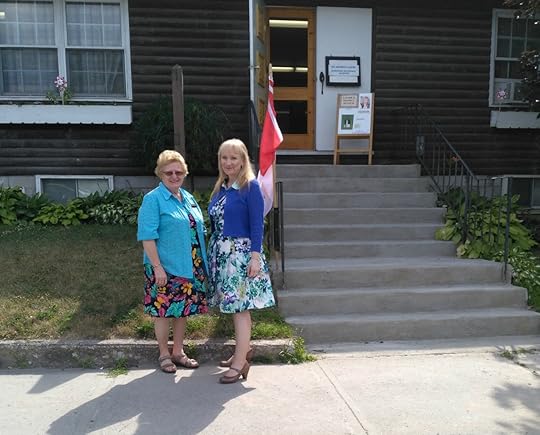
Greeted warmly by Anne Graham, we make our way up the well-worn steps, into a very special place, where the caretakers and guardians of our history, preserve our memories, our stories, and our heritage.
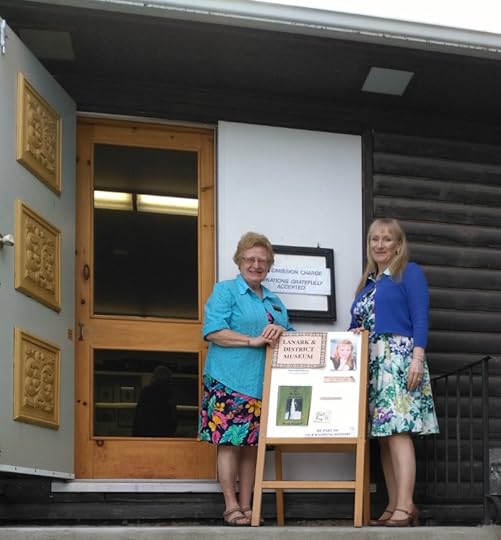
If you walk along George Street in Lanark, you will see a sign out front, greeting visitors, listing upcoming events, and welcoming all, with no charge for admission, and donations accepted. Anyone seeking knowledge, or in search of their history, is assured that they’ve come to the right place.
Not far from the front entrance, a plaque displays the names of those who went above and beyond, volunteering their time and expertise, throughout the decades, to keep the museum running smoothly.
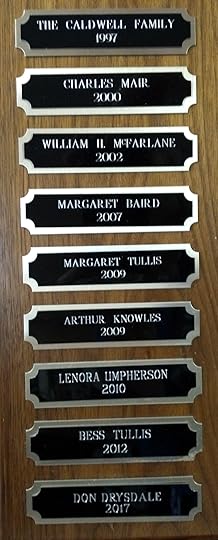
A photo on the wall reminds us of those who played key roles in the earliest days of the museum. Their foresight and dedication to preserving our local history leaves a lasting legacy, that will be enjoyed for many generations to come.
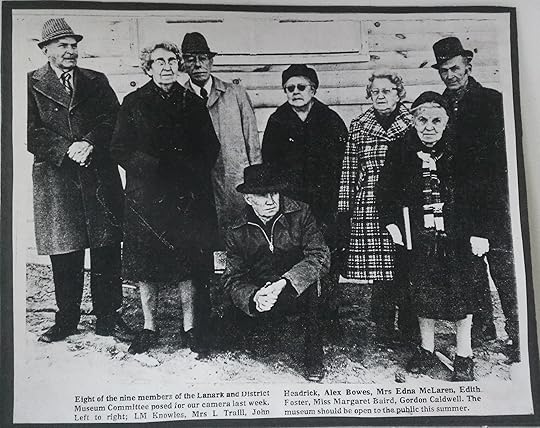
Many of us have ancestors from the area who served in the military, and the Lanark Museum has many displays highlighting our local heroes. Perhaps your ancestor is one of these soldiers who has been featured in the museum’s display cases.
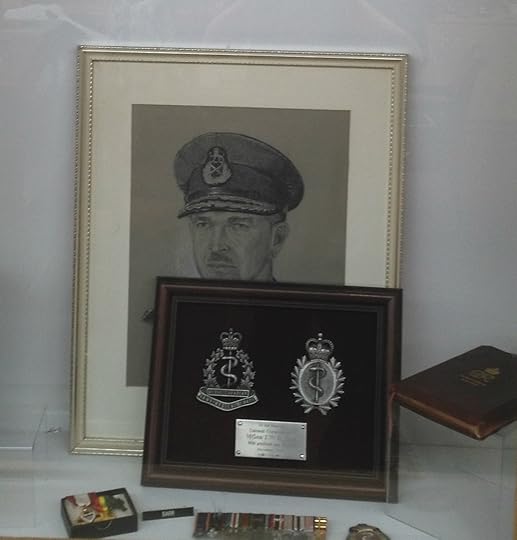
The museum also features a number of Rolls of Honour, listing the names of soldiers from the area who fought bravely for our country.

There are a tremendous number of local photographs. It’s great fun to see the old cars, some of the buildings no longer with us, and even recognize some of the smiling faces in these photos.
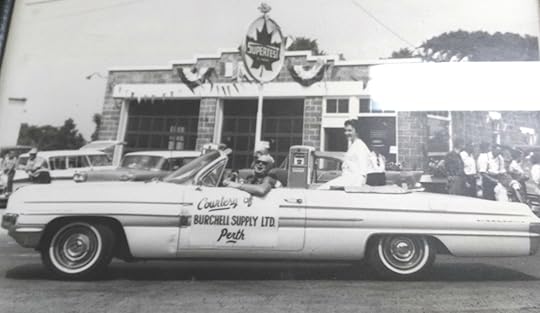
The museum is fortunate to have the help of two students for the summer. Meagan was kind enough to document our visit using her photography skills.

There is a wonderful display of original telegrams, some sent, and some received, by the Lavant Station, many years ago. These are real treasures, and give us some insight into the past and how different life was in those days! There are lots of familiar surnames on these telegrams, and some even provide a window into our family histories!

Along with the countless documents displayed there are also some lovely artifacts. The old wash bowl reminds us of the times before indoor plumbing was standard in our homes. We can imagine how different our ancestor’s lives might have been, and how carrying water from an outside well into the home was a daily event for these pioneers.
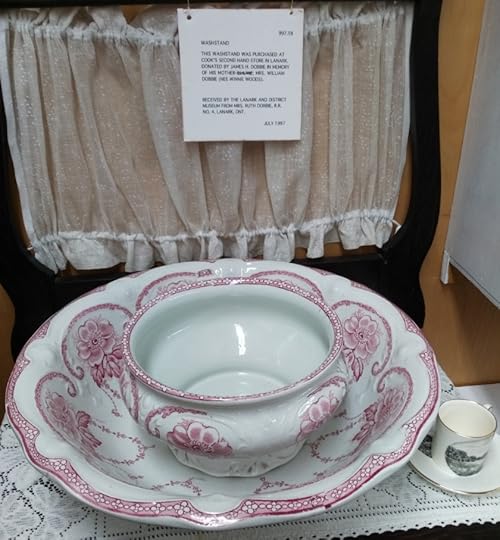
If your ancestors lived in McDonald’s Corners there is a wonderful remembrance displayed, honoring those who served their country, so well, and so faithfully.
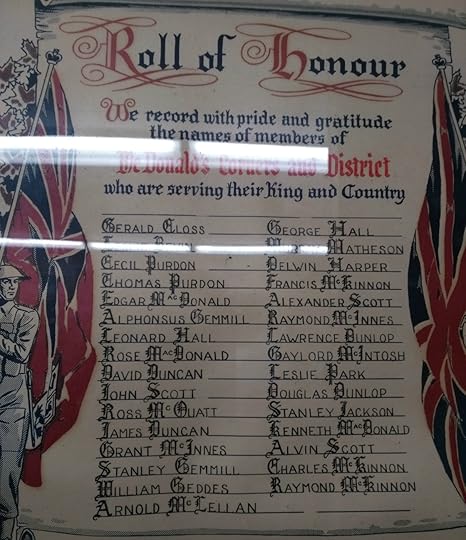
There are also a number of displays listing those soldiers who attended specific area schools and the names of those who served.
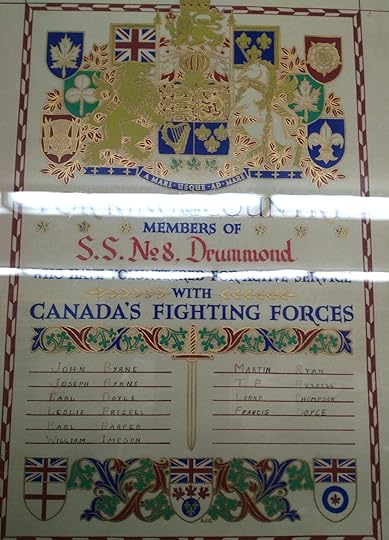
Another of the many area schools and their lists of those in service.

The Lanark Museum has many, many of these displays, and this is only a small sampling of what is available to view.
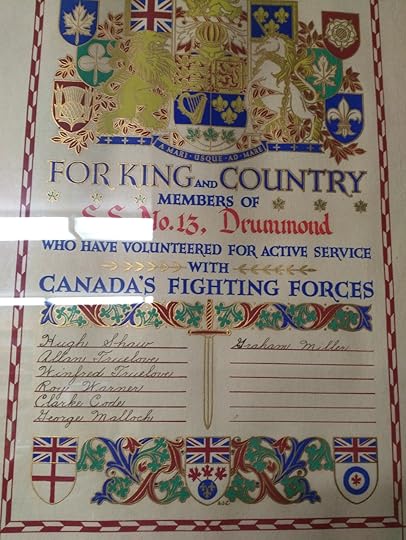
Being a history buff, it wasn’t easy to tear myself away from all of the exhibits in the museum, and get down to business, and read a couple of stories from my books. I chose two stories from “Lanark County Kid – My Travels Up and Down the Third Line”. I read one about a childhood visit to Lanark, and shopping for back-to-school clothing at the Kitten Mill.
My second story was “Balderson Cheese – Craving the Curd”. Our family often went on Sunday drives, and a visit to Balderson for a bag of soft squeaky curd, was something not to be missed! In the story, we go behind the counter, and watch the Master Cheesemaker, Omar Matte, and the others, while they stir the vats of heated milk, and then press the curds into big wooden circular presses. Considering that the factory is no longer there, it is a precious memory to have witnessed this process.
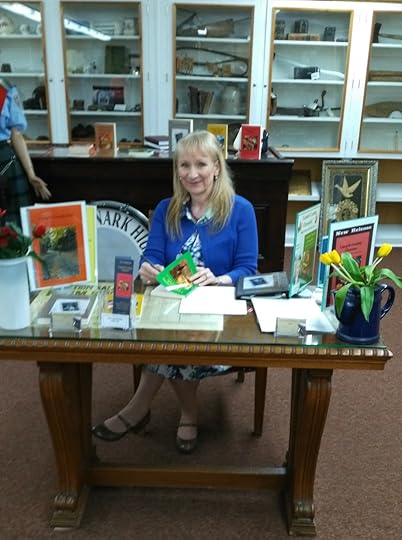
There are some really wonderful displays highlighting the Kitten Mill, and those who worked there over the years.
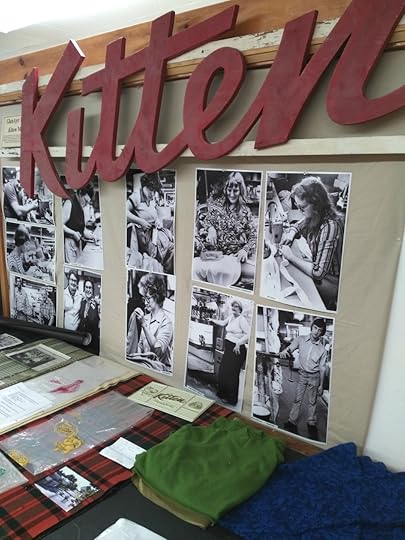
The Museum has done a wonderful job of preserving the artifacts and documents from the days of the Glenayr Kitten mills, and reminding us of the impact to employment and the economic influence to the village.
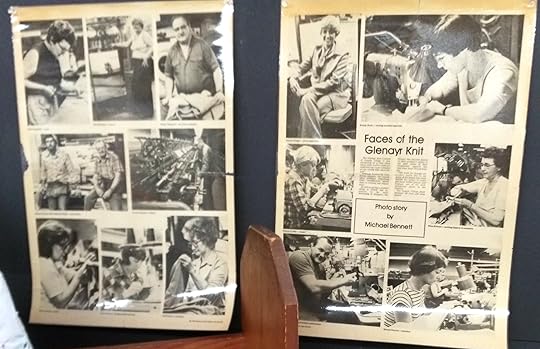
I think that many of us remember visiting the factory outlets, and all of the wonderful knitted clothing produced locally.

One of the special highlights for me was a visit with the Shamrock Quilt. While we can’t be sure of the date of its origin, I recall seeing it displayed at the museum many, many years ago, and was delighted to see it once again. This quilt is embroidered with the names of local families. If your family lived in the area it would be worth the trip to see this marvelous quilt, and discover your ancestor’s name embroidered in green.
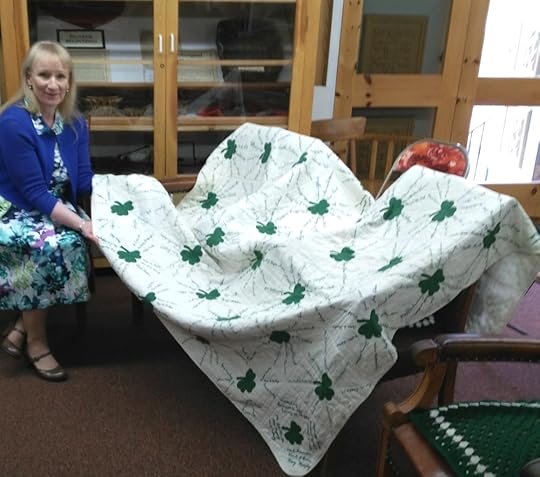
The Shamrock Quilt holds a special connection for Doris Quinn and myself. My Dad’s Aunt, Julia Stafford, married William Quinn, and both the Quinn and Stafford families are among the many, many, names on this precious artifact. It was a wonderful moment to be able to stand beside Doris, and see those names from the past, those who are no longer with us, but remain forever in our hearts.
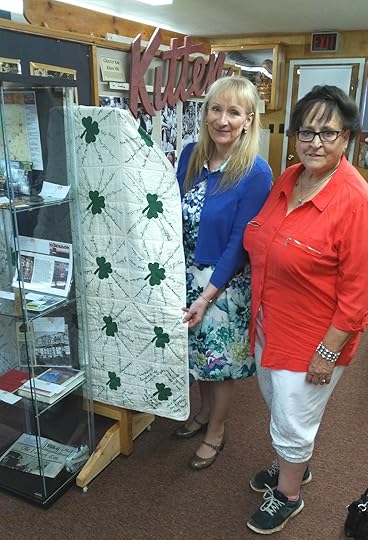 Photo below: Julia Stafford and Bill Quinn, on their wedding day, Sept. 14, 1909.
Photo below: Julia Stafford and Bill Quinn, on their wedding day, Sept. 14, 1909.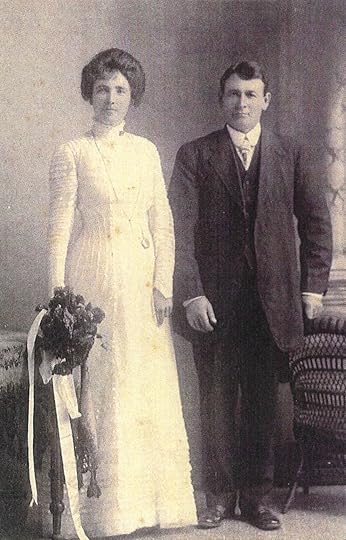
The following, are just a few squares, a small sample from the quilt, to show how the names have been stitched and displayed.

There are many other squares that were not photographed. Anyone with ancestors from this area may want to visit the quilt themselves for a more in depth look.

Another square of the quilt, but the quilt is enormous, and would be best viewed in person.

A final square from this historic piece. Hopefully the museum will photograph and digitize the entire quilt. That might be an interesting and very worthwhile project for the summer students!
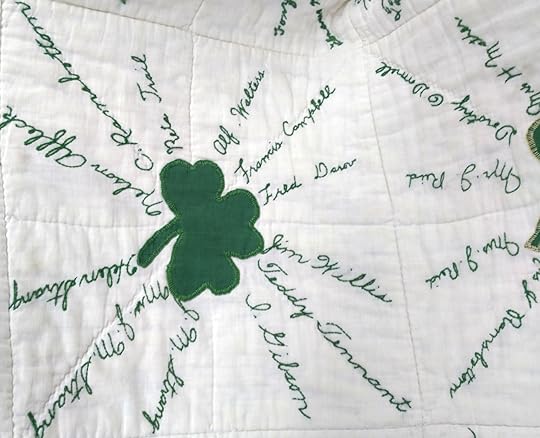
The late afternoon held a wonderful surprise – a visit from an old friend Susan Newberry Sarsfield. It was a real delight to visit with Susan, her Mom, and her daughter!
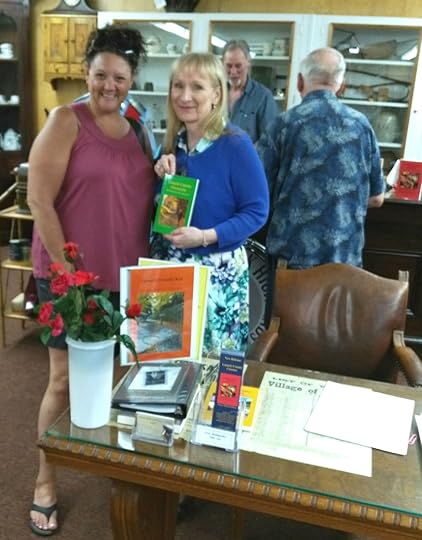
Like all good things, our visit to the Lanark Museum came to an end, and our host Anne Graham, kindly walked us out and into the sunny summer afternoon.
It was a day filled with history, and the importance of preserving our past. There are few tasks more essential than being the caretakers of our heritage. The Lanark Museum is the proud custodian of our region’s artifacts, memories, stories, and treasures.
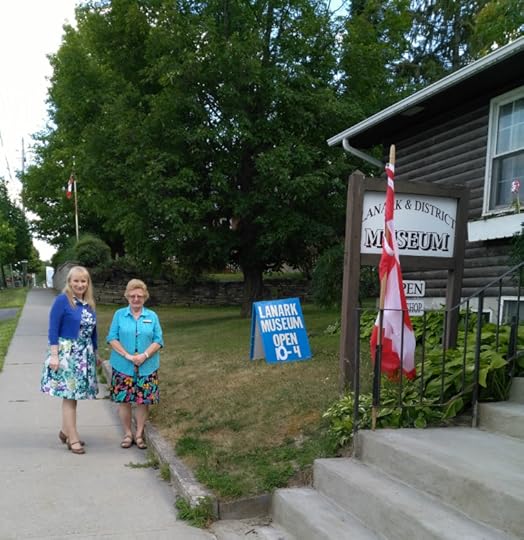
Many thanks to the kind folks at the Lanark and District Museum for hosting us, and sharing their collection of priceless treasures. Thanks also to the visitors who stopped by to share some stories and recollections. Anne, Norma, Gene, Doris – it was so nice to spend time with you – thanks for helping to make our day special.
As we said goodbye, and headed down the highway, we are struck by the pristine beauty of the Lanark Highlands, the clear waters, the fresh air, and the greenery as far as the eye can see, on this beautiful summer day.
Until we meet again…..
 Stories for the Lanark Museum readings from:“Lanark County Kid: My Travels Up and Down the Third Line”‘Lanark Sweaters – Soft as a Kitten’ and ‘Balderson Cheese – Craving the Curd’
Stories for the Lanark Museum readings from:“Lanark County Kid: My Travels Up and Down the Third Line”‘Lanark Sweaters – Soft as a Kitten’ and ‘Balderson Cheese – Craving the Curd’
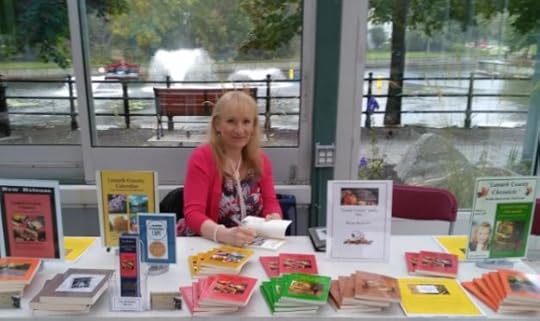
Arlene Stafford-Wilson
Honorary Life Member, Lanark County Genealogical Society
Lanark County Pioneer Families Humanitarian Award
Francois Bregha Storyteller Award
Heritage Perth Architectural Conservation Award
Member, Association of Professional Genealogists
Author of : “Lanark County Christmas”, “Lanark County Comfort”, “Lanark County Collection”, “Lanark County Calling”, “Lanark County Classics”, “Lanark County Connections”, “Lanark County Calendar”, “Lanark County Chronicle”, “Lanark County Kid”, “Recipes & Recollections”, “Lanark County Kitchen: A Maple Legacy from Tree to Table”, “Lanark County Classrooms: Remembering Our School Days”.
July 26, 2025
Perth Planing Mill Horse and Wagon -1974

Some may recall the “energy crisis” of the 1970s, but may not remember the innovative solution introduced by the Perth Planing Mill. In 1974, they began to deliver goods around town in a horse-drawn wagon.
* * *
Popular local columnist, Lillian Arthur, (photo), wrote a fascinating article for “The Ottawa Citizen”, about this very unique delivery service, transcribed below.
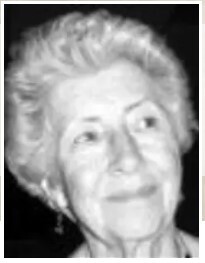
Lillian (Smith) Arthur (1934-2015), reporter for CJET radio in Smiths Falls, and journalist with, “The Ottawa Citizen”
Horse and Horse-Lover
Join Up to Beat
Perth’s Energy Shortage
PERTH – History repeats itself in an historic town as a horse and horse lover join forces to beat the energy shortage. Bob McLenaghan of the Perth Planing Mill is using a horse-drawn wagon to make deliveries around town.
Salem, the Clydesdale
Salem, a 5-year-old Clydesdale is becoming a common sight and it has already become a favourite with children.
Equipping a horse and wagon is an involved process in these modern times. The running gear (axle and frame) were built by an Amish buggy maker near Kitchener and the body of the wagon was constructed by Thomas Rounding, a local sulky builder.
The wagon may recall the good old days for many as it is a replica of an old fashioned draught wagon in use for local commerce until 1930. One modern concession is rubber tires.
Salem’s harness came from Toronto and is made of leather and brass and trimmed with fashionable patent leather. Sam Freedman, the harness-maker, is experiencing a great demand for his product and a business which was just hanging on a few years ago now employs 20 people.
Salem previously worked in the bush and had no use for horseshoes but now he has been shod for the first time by a local blacksmith.
Gerald Mitchell – Blacksmith
Gerald Mitchell is the local blacksmith and he was trained for his trade through a government course in British Columbia. Unlike the blacksmith of the past era, Gerald packs his forge, anvil and other tools into the back of his half-ton truck and travels to the horses with his portable blacksmith shop.
Tom Adam – Driver
Perched on the seat of the new wagon handling the reins is the friendly driver, Tom Adam. Tom is known locally as a judge at horse drawing contests and what he doesn’t know about horses is not worth knowing.
Horse Trader
Salem’s owner, Bob McLenaghan, recalls buying his first horse when he was 16. He spent all afternoon at a country farm horse-trading the price from $20 down to $12. He sold that horse the following spring for $50. Since then Bob has owned and shown ponies, race horses and saddle horses and his prize ribbons could fill a bushel basket.
Bob brought the first Welsh pony into Canada about 20 years ago. “They were only 46 inches high and great for kids.” He still owns three of those original ponies at his Joymac Farm on the Rideau Ferry Road, along with 20 other horses.
Bob is also the proud owner of several antique horse-drawn vehicles including a rare double seater Victorian and a Basket Phaeton. He would like to see a local transportation museum established to preserve the old vehicles that are native to this area.
Perth Planing Mill
Bob’s planing mill is also a part of Perth’s history. The mill was established in 1850 by the Kippen family as a sash and door factory.
Alex Kippen was a Scottish architect and his contract to build the Perth Town Hall prompted the introduction of the first mechanical equipment at the mill.
Just 3 Owners in 120 years
The historic business has known only three owners in its 120 year history: the Kippen, Clement, and finally the McLenaghan family. Horses aren’t new to the business; a workhorse was used in the yard at the mill as late as 1960 when both horse and handler retired together.
The lumber deliveries now made by truck are expensive with the rising cost of gasoline. A new truck equipped with modern emission controls gets only five miles to the gallon. Salem, however, covers 15 to 20 miles a day around town on a bale of hay and three gallons of oats. He can easily handle a four ton load.
Salem Loves to Work
The Clydesdale breed originated in Lanarkshire; Scotland and Salem is 1,800 pounds of friendship.
“He loves to work and he loves people. He has a sense of humour.” says McLenaghan. “People just don’t know horses anymore. They all have their own personalities.”
Salem is a tease; he’ll take your gloves and toss them into the air or nibble on your purse. You shouldn’t give him sugar; he may come to expect it and get cross when it isn’t available. Salem would appreciate an occasional carrot for a treat and he’ll eat it right out of your hands. This bit of information comes straight from the owner’s mouth.
While everyone else is worrying about fuel shortages, Salem the workhorse sums up the situation with a sign on the back of his wagon: “What Energy Shortage?”
(Lillian Arthur’s article appeared in the February 13, 1974 edition of “The Ottawa Citizen”, on page 3)
* * *

Arlene Stafford-Wilson
Honorary Life Member, Lanark County Genealogical Society
Lanark County Pioneer Families Humanitarian Award
Francois Bregha Storyteller Award
Heritage Perth Architectural Conservation Award
Member, Association of Professional Genealogists
Heritage Perth Architectural Conservation Award
Author of : “Lanark County Kitchen: A Maple Legacy from Tree to Table”, “Lanark County Christmas”, “Lanark County Comfort”, “Lanark County Collection”, “Lanark County Calling”, “Lanark County Classics”, “Lanark County Connections”, “Lanark County Calendar”, “Lanark County Chronicle”, “Lanark County Kid”, & “Recipes & Recollections”, and “Lanark County Classrooms: Remembering Our School Days”
July 18, 2025
Rideau Ferry Inn – Those Hot Summer Nights!

Oh, those hot summer nights at the Rideau Ferry Inn! The dancing, the laughter, stolen kisses, sneaking drinks in the parking lot, and the best live rock and roll around!
Its official name back then, was the Poonamalie Pavilion, but nobody called it that. To my friends and me, it was simply the Rideau Ferry Inn; and you could find us there most weekend nights in the summer, socializing, laughing, and dancing the night away.
Situated along the clear, blue waters of the Rideau, the Rideau Ferry Inn has hosted many generations of tourists and boaters, providing sumptuous meals, comfortable accommodation, and lively entertainment. Arguably, the highlight of the small settlement of Rideau Ferry, our former teenage haunt, wasn’t the original structure at this location. The original building was actually a home.
The original structure was a house built in 1853 by Archibald Campbell. Archibald married Elizabeth Buchanan, a preacher’s daughter. Her father was the Reverend George Buchanan, and was one of the early Presbyterian ministers of Beckwith Township, serving the congregation at Franktown.
Their daughter, Helen Buchanan Campbell, married John Coutts. As her parents were aging, and needed assistance, the couple moved in with them in 1870. During that time, John made some additions to the home, and when he was finished, they not only had ample room for themselves, but had more than enough room to accommodate guests. They began to rent rooms in the house to summer tourists, who were traveling by boat ,along the mighty Rideau waterways.
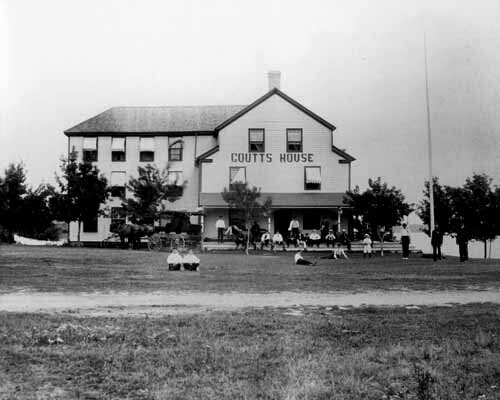
As the years went by, their home became known as ‘Coutts House’, and eventually, had the reputation of being a very fine hotel. In 1893 a three-storey addition was built at the back of the house. A large dining room was added to the first floor. The second and third floors had fifteen hotel rooms each, and an indoor bathroom.
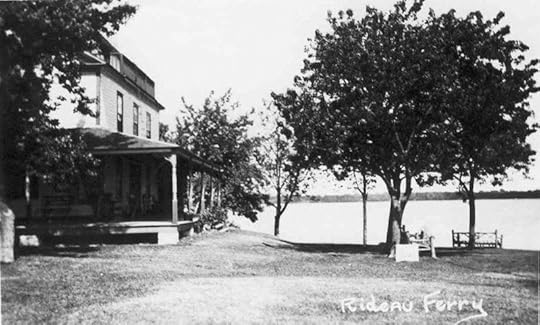
After 1905, the building was rented to a series of business men. During the 1920s and 30s, regattas became popular, and Coutts House held canoe races, and rowboats races. The Coutts family also sponsored competitions for sailboats, and it was the site of many grand daytime celebrations, and intimate evening affairs, for the wealthy travelers, visiting in the summer.
In 1947, Doug Wallace, native of Osgoode bought Coutts House, tore it down, and built a new structure with wood framing, and grey granite blocks. It was a two-storey building, and the second floor featured a large dance area, with seating on three sides.
By the 1960s, the building had become known as the Rideau Ferry Inn, and during this time, became licensed for liquor sales. Up until that time people would smuggle in their own booze, particularly in the roaring twenties when rum-running along the Rideau had its hey-day.
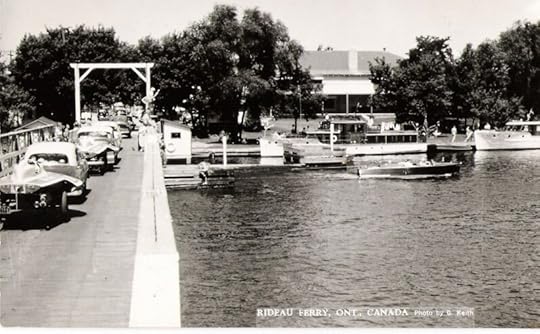
It was in the 1970s, that I first heard the tales about the popular night spot, and all the good times that were had at the Rideau Ferry Inn. There were stories told up and down the halls of the Perth High School – stories of summer romances with cottagers staying at seasonal properties nearby, or the ultra-cool teens that traveled by boat along the Rideau, with their parents. There was also talk of the teenage kids from the States, and their hip clothing and accessories; styles that would take years to reach our little communities near Perth. There were lots of accounts at our high school of the talented rock bands that performed, and of the nights spent dancing to the top hits played by edgy disc jockeys. I couldn’t wait to go and see it for myself.
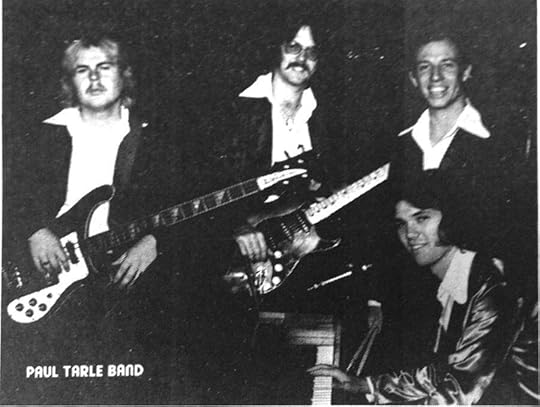
The main house-band at ‘The Inn’ in the early 1970s was the Paul Tarle Band – and we showed off our cool dance moves, as we listened to their popular rock classics.
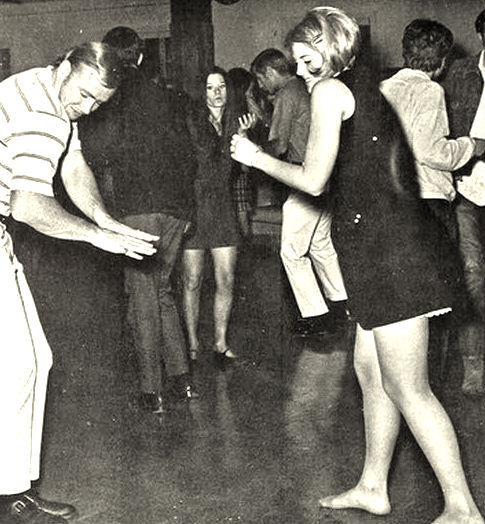
One of the best parties during our steamy Lanark County summers was the annual Rideau Ferry Regatta. Beautiful, sleek, boats from all over, competing for the sought-after prizes, and the prestige of being ‘Number 1’ on the big lakes.
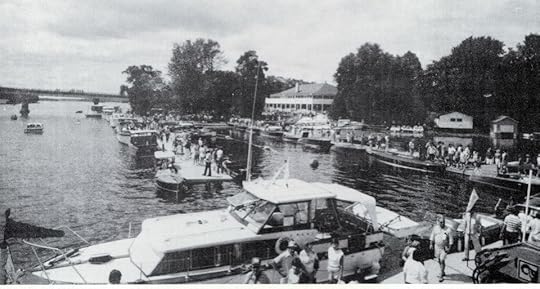
Regattas were all about hot sun, cold beers, the cool, clear, waters, of the Rideau Lakes, and beautiful boats all around us.
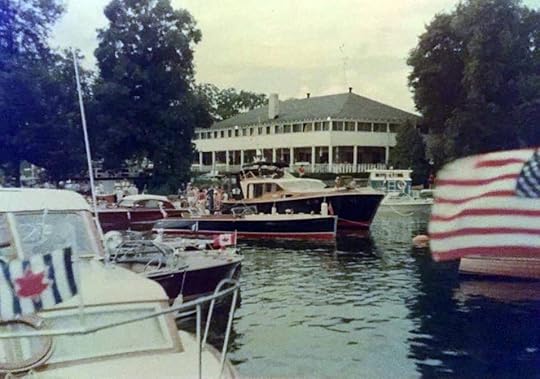
We’ll never forget the annual regattas, or the great music at the Rideau Ferry Inn. Bands like ‘Sammy Seaman’ and his group kept us up until the wee hours. Some nights it was ‘Woody Herman and the Young Thundering Herd’, and other evenings we were entertained by the ‘Paul Chabot Band’. Occasionally, instead of live bands at the ‘Inn’, there was a ‘Disco’ dance provided by a local disc jockey, by the name of ‘Sounds Great’.
Many years after our frequent teenage visits to the Rideau Ferry Inn, the building was purchased by Elmer and Eva Purdon. It was still ‘the’ place at that time to host fancy wedding receptions, or 50th wedding anniversary celebrations.
The FireBecause we’d had so many good times at the Rideau Ferry Inn, it was a terrible shock for my friends and I when we heard about the fire in February of 1986, that destroyed our former dance hall. The fire started on the top floor, where the dances had been held for so many years. The ground floor was also destroyed in the fire, and that is where the kitchen, the large dining room, and bar were located.
My friends and I drove down to Rideau Ferry a few days after the fire. I don’t think it was so much out of curiosity, but more out of disbelief. Could it be true, that the place where we’d passed so many of our happy youthful hours was really gone? There were so many memories of friendships, dancing, and all of the special evenings we spent at the Rideau Ferry Inn.
We drove up to where the Inn had stood, and looked around. No one said a word. I think that as we stared at the charred foundation of the building, each of us was recalling our own versions of the times spent there, in our youth. They were such innocent, awkward, magical, teenage times. We sat there for a few more moments, still silent, and then drove away, back up the Ferry Road toward Perth.
Fond Memories RemainThe building may be gone, but our fond memories of the Rideau Ferry Inn will remain with us forever. We will always remember the music, the friends, and the good times. Those long summer nights, when the stars seemed to shine a little brighter, the sunsets glowed a little softer. The peaceful, pristine, waters of the Rideau Lakes made a perfect backdrop for those innocent days of our youth, when life stretched out ahead of us…..so full of promise, with our dreams for the future.

………………..
An excerpt from – ‘Revelry and Rogues on the Rideau’ – ‘Lanark County Chronicle’
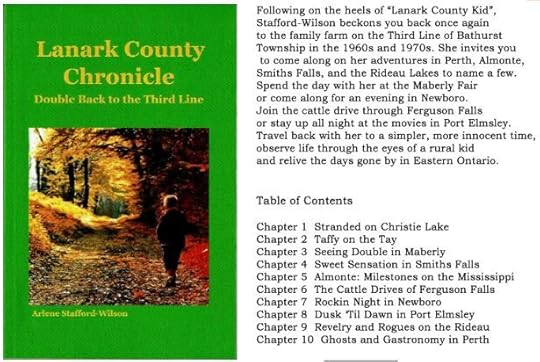
……..
Local Names:Although there were many tourists and visitors in the summer, they were only there for a few short weeks at most. We became acquainted with many of the folks who lived year-round at Rideau Ferry, and some of the local names at that time were: McLean, Donaldson, Buchanan, Gemmill, Frost, Sewell, Coutts, Gallagher, Beveridge, McKay, Wills, McVeety, Millar, Tully, Oliver, Dettrick, Bethune, Purdon, Hitchcock, Fitzgerald, Hall, Gould, Irving, Joynt, King, McCue, Wallace, McKay and Campbell.
…………
Other Stories of the Rideau Ferry InnJoin the author on a steamy hot summer night, park your car outside the Rideau Ferry Inn in the ‘passion pit’, duck as the beer-bottles fly, and the action heats up outside. Hear some of the top bands from the 1960s, 1970s, and 1980s play some classic rock and roll along the peaceful shores of the Rideau.
“Lanark County Collection: Winding Our Way Down Memory Lane”
photos: Perth Historical Society, Carol-Ann McDougall, Perth Remembered, Vintage Smiths Falls and Perth, The Perth Courier, Georgia McNally, Vintage Race Boat Shop, and from private family collections.……….
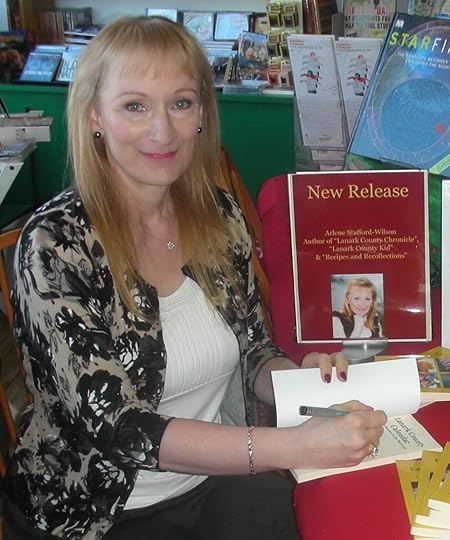
Arlene Stafford-Wilson
Member, Association of Professional GenealogistsHonorary Life Member, Lanark County Genealogical SocietyLanark County Pioneer Families Humanitarian AwardFrancois Bregha Storyteller AwardHeritage Perth Architectural Conservation AwardAuthor of : “Lanark County Christmas”, “Lanark County Comfort”, “Lanark County Collection”, “Lanark County Calling”, “Lanark County Classics”, “Lanark County Connections”, “Lanark County Calendar”, “Lanark County Chronicle”, “Lanark County Kid”, & “Recipes & Recollections”, and “Lanark County Kitchen: A Maple Legacy from Tree to Table”, and “Lanark County Classrooms: Remembering Our School Days.”June 24, 2025
Antler Lodge – Dancing the Night Away in Cottage Country
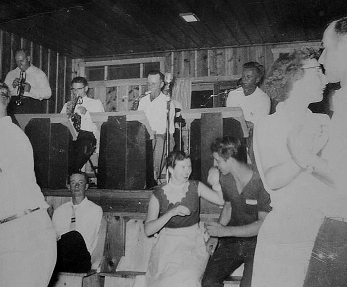
Antler Lodge opened its doors for the first time on Friday evening, May 14th 1954. Admission was seventy-five cents, and they featured round and square dancing to live bands.

One of the opening acts at the Lodge was Lee Miller’s Orchestra, and they delighted the crowds weekend after weekend, for much of that first summer. Naturally, being a new venue, young people, and even some not-so-young people flocked to see the new Antler Lodge. There were curious tourists as well, who came to check out the newest dance hall in the region, and it became ‘the place to go’ in the summer of ’54. When the perennially popular Rideau Ferry Regatta wound down on the August long weekend, the Lodge became the hot-spot for the in-crowds, a place to mingle and mix, with some new faces, and the old familiar faces as well. Antler Lodge was a hit.

Dick and Margaret McLean, the owners of Antler Lodge, must have been pleased that first summer. Their new business was booming, a crowd-pleasing attraction, where people could gather together, dance, socialize, and enjoy some live country music.

It’s anyone’s guess whether Antler Lodge would have ever existed, if Margaret and Dick hadn’t got together back in 1939. They were both local kids from Rideau Ferry. Margaret, the daughter of Mr. and Mrs. J.B. Jackson, and Richard, the son of Mr. and Mrs. James McLean.
The McLean’s new business Antler Lodge would become an endearing and memorable place for so many, in the decades that followed.
As those first long, hot, summer weekends at Antler Lodge unfolded, the familiar strains of down-home country fiddling escaped the confines of the rustic wooden structure, and echoed over the fields, and across the Rideau lakes. Melodies from Hank Snow, Ray Price and Webb Pierce, played by local bands, filled the wooden rafters of the homespun Lodge, with hit after hit of trendy country and western tunes. The dancing went on until the wee hours; romances blossomed, and hearts were broken, to the tunes of Marty Robbins, Jim Reeves and Eddy Arnold. The parking lot was crammed with vehicles from Perth, Smiths Falls, Brockville, and even as far away as Kingston. Pretty girls posed demurely beside their date’s cars, decked out in pedal pushers or full skirts, flirting with their beaus, who sported narrow jeans, or pleated trousers. Shiny glass bottles of beer and liquor appeared from their hiding spots, tucked away, hidden carefully in glove boxes and trunks, and kisses were stolen in this parking lot, known to the neighbourhood teens as the passion pit.
Some kids hung out at the Rideau Ferry Inn, just up the road, but there was something about Antler Lodge; it was cozy, more intimate, more like a house party. The inside was spartan, unrefined, with exposed wooden beams, and a huge set of antlers mounted on the wall, above a homey, unpretentious, stone fireplace. In this casual, laid-back atmosphere, the lighting above the dance floor glowed soft, muted; perfect for swaying close, in dimly lit corners, and for long, steady, gazes into the eyes of a dance partner.
One of the first wedding receptions held at Antler Lodge was on October 19, 1955 as they played host to the delightful newlyweds Helen Kehoe and Tom Kerr. Helen was the daughter of Mr. and Mrs. Bernard Kehoe of Perth, and Thomas was the son of Mr. and Mrs. Francis Kerr of Stanleyville. The colourful autumn leaves set the stage for the joyful wedding, at St. John’s Church in Perth, officiated by Father Farrell. Shirley Anne Kehoe, the bride’s pretty sister, was the maid of honour, and the lovely Monica Kerr was her bridesmaid. At the groom’s side, stood his best man and brother, Walter Kerr, and his charming ushers escorting guests to their seats at St. John’s Church that day, were Pat Kehoe and Pat Kerr. Following the wedding, an elegant dinner was served in the Blue Room, at the Perth Hotel; and one of the highlights of this special day, was a memorable reception, at none other than Antler Lodge.
On June 12th 1956, Antler Lodge played host to a very special retirement party, for one of the area’s longest serving, and most respected municipal clerks – Roy Darou. An enthusiastic crowd of over 200 well-wishers and supporters, mostly citizens of North Elmsley Township, gathered to pay tribute to this local legend. Roy, a dedicated worker, had served the township faithfully, holding the same office for over forty years. There were glowing speeches that evening by Reeve James Coutts, appreciative tributes by Councillor Ferguson McVeety, many gifts, and warm wishes, from all who had gathered there. This was one of the earliest of such notable celebrations, to be held at the Lodge, in the coming decades.
Competition remained steady in the dance hall business throughout the summer of ’58, and ABC Hall in Bolingbroke began featuring bands every Friday night, advertising a variety of tempting refreshments, along with music by Lockwood’s Orchestra. At the Agricultural Hall in McDonald’s Corners, dances were usually held on Saturdays, and often their music was supplied by popular local group – Bill Hannah and the Nightingales. The admission price was considerably lower than the other halls, at the bargain-basement price of fifty cents for the evening. To remain competitive, Antler Lodge held a special Midnight Frolic, on Sunday August 3rd from 12:00 a.m. until 3:00 a.m., drawing huge crowds of racers and boating enthusiasts, following the annual Rideau Ferry Regatta.

In the spring of 1959, Antler Lodge raised the bar for their opening dance of the season by featuring music by the famed Country Hoppers, stars of CKWS radio, Channel 11 TV, and RCA Victor records. They also increased the price of admission, and began to enforce a strict ‘no leather jackets or boots admitted’ policy, to discourage unsavory types from attending their dances, and causing trouble.
The Country Hoppers had a steady gig at the Lodge for the entire summer of ’59, and all through the cottage season in 1960 as well. People for miles around flocked to hear the sounds of country and western music, mingle, drink, and dance the night away.

1961 would see an even greater increase in the popularity of area dance halls, and there were no less than eight local venues featuring live bands. The Stanley Lodge in Lanark constructed a new wooden dance platform, and hosted the Haylofters of CJOH TV, as well as the much sought after Ottawa Valley Melodiers.
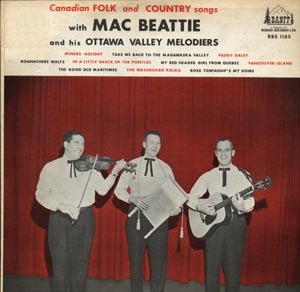
John ‘Mac’ Beattie, Arnprior native, led the Melodiers, a legendary Ottawa Valley band on drums and vocals, with Reg Hill on fiddle, Garnet Scheel on guitar, Gaetan Fairfield on rhythm guitar, and Bob Whitney on saxophone. The band performed for decades, and released a total of seven albums, mostly in the 1960s.
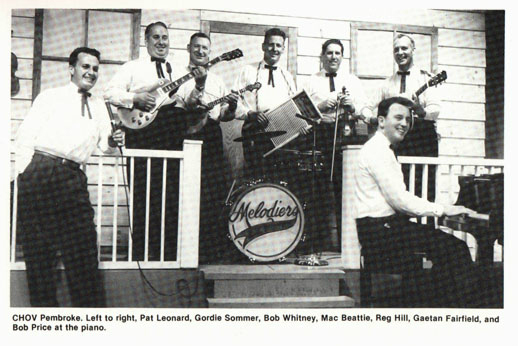
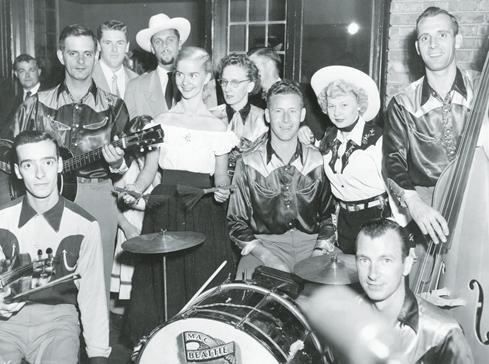
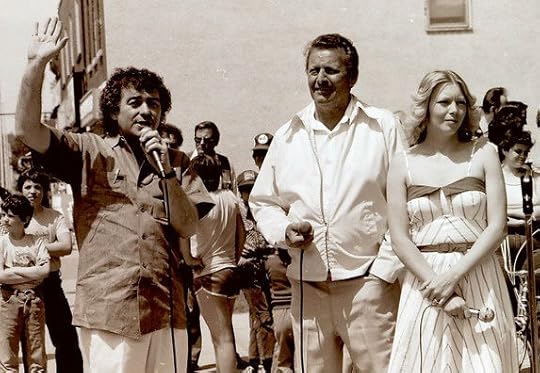
At McDonald’s Corners, music lovers could enjoy the sounds of the Country Rockets, playing weekends at the Agricultural Hall, and the Maberly Agricultural Hall featured Kenny Jackson’s Valley Cruisers. The Valley Cruisers had a distinctive country sound, highlighted by masterful fiddler Kenny Jackson, and polished performer Harry Adrain on guitar and vocals. The gifted Raymond ‘Raymie’ Donaldson played lead guitar, with the powerful strumming of Gary Barr on rhythm guitar, rounding out this dynamic group.
At Scott’s Ballroom in Westport, they featured round and square dancing, to the sounds of Fred Paquin’s Orchestra. Kingston native Don Cochrane got his start in the Fred Paquin Orchestra, as a teenager. Don would go on to collaborate on songs recorded by the Mercey Brothers, and would record two albums of his own music as well.
During that summer, Barker’s on Hwy 15, Otter Lake had music by Ron McMunn and his Country Cousins. Ron McMunn, or The Silver Fox, as he was known, hailed from Clayton, and in 1954, Ron formed the Country Cousins. His band performed live on CJET radio in Smiths Falls every Saturday night for over a decade and this set the stage for their tremendous popularity in local venues in the years that followed.
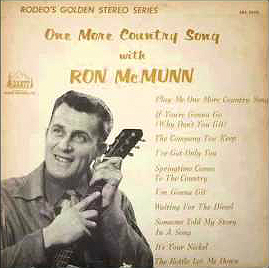
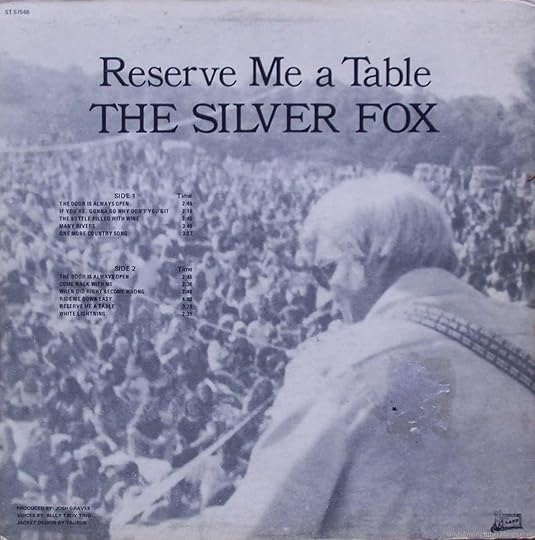
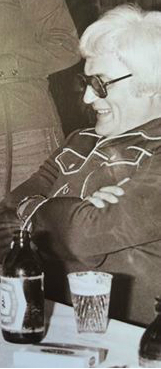 Ron McMunn ‘The Silver Fox’
Ron McMunn ‘The Silver Fox’At the Fallbrook Orange Hall, the Mississippi River Boys provided the weekend entertainment, and at Antler Lodge, the Country Hoppers enjoyed their third steady year of regular engagements.
Early in that summer of 1961, the owners of Antler Lodge – Mr. and Mrs. Richard ‘Dick’ McLean announced the forthcoming marriage of their daughter Helen Isobel, to Mr. William Donald Robert ‘Don’ Halpenny. He was the son of Mr. and Mrs. R. Anson Halpenny, and hailed from Easton’s Corners. The marriage took place on July 7, at St. James Anglican Church in Perth.
Later, that same summer, Antler Lodge hosted former Perth High School classmates as they celebrated their Class of’44 reunion.

Following a tasty turkey supper at the Rideau Ferry Inn, everyone drove up the road to the Lodge for some live music and square dancing. It was a night to remember, and Gordon Mather was an entertaining Master of Ceremonies. There was a good turnout with Mr. and Mrs. Frank Frizell (Dorothy Ferguson), Bill Thomas, Mr. and Mrs. Willard Shaw (Vivian Greenley) , Dr. and Mrs. C. Campbell (Mary Ewart), Mr. and Mrs. Bernard Elliot (Kaye Ferguson), Mr. and Mrs. Gordon Mather, George Findlay, Mr. and Mrs. Ken Buchanan (Evelyn Radford), Mr. and Mrs. Don Goodfellow (Doreen Marcellin) Mr. and Mrs. Fred Guarino (Mid Stewart), Mr. and Mrs. Ron Thompson (Bette Oakes), Mrs. F. Cohis (Maxine Ramsbottom), Mr. and Mrs. George Leonard, Mr. and Mrs. Don Campbell (Marg Quartermain), Mr. and Mrs. T. Rockburn (Clara McInnis)
Several prizes were awarded during the evening: Man with the baldest head – Willard Shaw, runner-up Gordon Mather, Couple married the longest – Mr. and Mrs. Ken Buchanan, Couple married the shortest time – Bernard and Kaye Elliot, Couple travelling the longest distance – Mr. and Mrs. C. Cameron, Couple with an anniversary – Mr. and Mrs. Fred Guarino, and last, but not least – a prize for a bachelor – George Finlay.
The Country Hoppers, formerly known as the Riders of the Southern Trail, were a tremendously popular band, drawing large crowds from Carleton Place, Smiths Falls and Perth; and they became the regular weekend entertainment at Antler Lodge from 1962 through to 1966. Their first album ‘The Country Kid’ was released in 1962 and included performances by Davey Gibbs, Garry ‘Gizz’ Watt, Fred ‘Pappy’ Ryan, Paul ‘Hiker’ Gurry, and Larry ‘Dooley’ Protheroe. The Country Hoppers were known for their versatility and could play country fiddle tunes, honky-tonk, ballads, and square dance music as well.
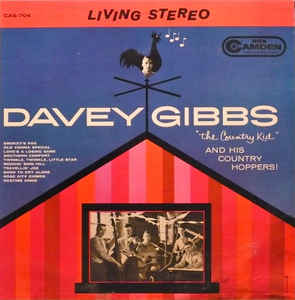

…………
In the fall of ‘64, the Appleton Junior Farmers held a dance at the Lodge, featuring the Happy Wanderers. The Happy Wanderers, an Ottawa group, were immensely popular with teens, and had a regular show, every Saturday night, at the Carleton Place Town Hall. Ken Reynolds, Ward Allen, Bob King, Vince Lebeau, Joe Brown, and Lynn Strauff, formed the original CFRA Happy Wanderers, and they became one of the most popular acts in the Ottawa Valley.
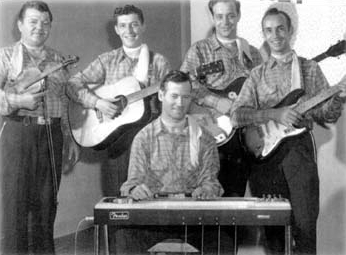
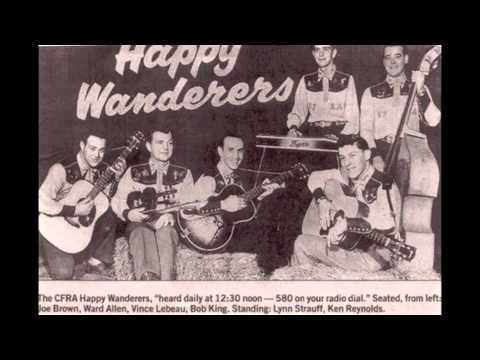
They were also featured on a weekly half-hour show, on CFRA radio, broadcast across the Valley. When they played Antler Lodge, they brought special guests Marie King, Barry and Lawanda Brown. Bob Livingston kept the evening’s dancers moving around the floor like clockwork, as the caller for the square dancing.
A few years later, Barry and Lawanda, along with their father Joe, and their sister Tracey, would form The Family Brown, which included masterful lead guitarist Dave Dennison, and accomplished drummer, and capable band manager Ron Sparling.
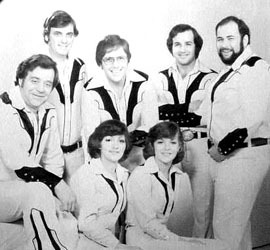
Another talented group drawing crowds to the Lodge that year was the Country Harmony Boys. During the later part of ’64, Antler Lodge also featured the Top Hats and the Travelons.
By 1968 Antler Lodge had an established house band that entertained the crowds every Saturday night, during the entire cottage season. The Country Harmony Boys were a polished group of talented local musicians, and they drew the masses, young and old, to the Lodge, for their weekly fill of square dancing tunes.
Meanwhile, some of the other area dance halls were booming as well, and the popular Balderson Hall often featured Bill Munro and his Country Rockets, or Don Gilchrist and his Dancers, and they kept these cozy venues hopping until the wee hours. Donnie Gilchrist, a talented showman, was born in Campbell’s Bay. At one point in his career, he teamed up with the very capable Joan Ann Jamieson, and went on to become one of the legendary step-dancers of his time. He later caught the attention of Frank Ryan, founder of CFRA radio station, who helped to promote him on the local airwaves. Don rose from his humble beginnings in local dance halls, and went on to perform in 24 countries around the world, and even appeared on numerous TV specials.
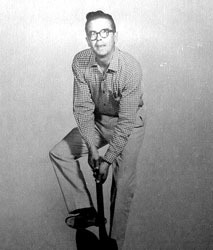
Frank Ryan of CFRA was key in promoting many of the local Ottawa Valley bands and helping them to succeed in a very competitive industry.
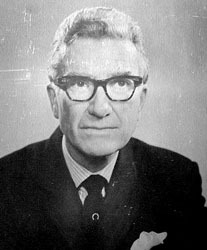 CFRA’s Frank Ryan
CFRA’s Frank RyanBecause of their location, ABC Hall in Bolingbroke often had acts come in from the city of Kingston. One of the more sought-after bands in the summer of ’68 was Mallen’s Melodiers, playing both modern pop, and square dancing tunes. Not to be outdone, the hall at McDonald’s Corners regularly featured crowd-pleasing music by Symington’s Orchestra, for the very competitive admission price of seventy-five cents.
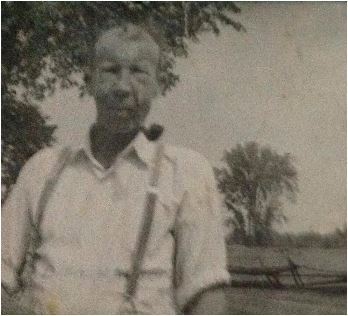
Antler Lodge hosted yet another high-profile wedding reception, when Beryl Kehoe married Robert Orok. On July 31st at St. John’s Church in Perth, Beryl, daughter of Mr. and Mrs. Lambert Kehoe of Rideau Ferry, became Mrs. Robert Orok. Robert’s parents Fred and Mona Orok were the founders and owners of the flourishing Orok’s Hardware Store in Lanark, and were well known and respected in the area. Rev. B.F. O’Neil made the journey all the way from Brockville to officiate the wedding. Highlights of the ceremony included memorable music, played by talented organist Mrs. Robert McTavish, and a heartfelt solo sung by the gifted David St. Onge.
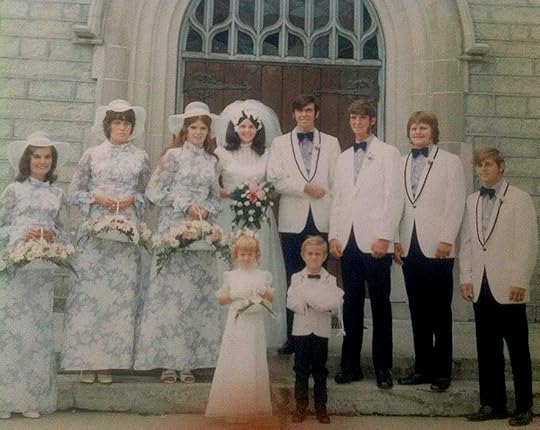
Standing up with Beryl was dear friend Kathryn Campbell, Maid of Honour, and two lovely Bridesmaids – Darlene Beveridge and Judith Orok. William Neilson was the dashing best man, accompanied by two charming ushers, Richard Kellar and Bernard Kehoe. Two delightful youngsters taking part in the ceremony were Alison Kerr, the bride’s cousin as flower girl, and small, but capable Conrad Potvin had the all-important task of ring-bearer.
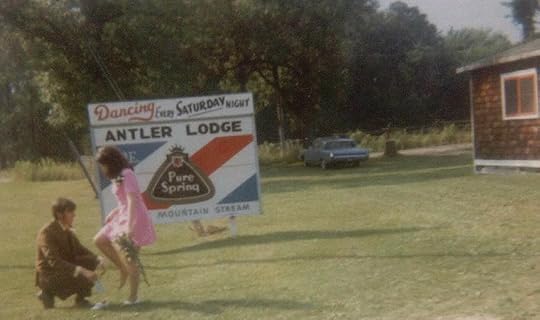
While Antler Lodge was growing in popularity during the ‘50s and ‘60s, there was an undeniable musical revolution taking place in England; and the distinctive beat of rock and roll music was spreading across the ocean, to North America. It was called the British Invasion, and groups like The Beatles, The Dave Clark Five, The Kinks, The Rolling Stones, Herman’s Hermits and The Who, began to get air-time on Canadian radio stations. By the mid 1960s rock and roll was dominating the local airwaves, and by the late ‘60s and early ‘70s, many young people followed the trendy new music, and wanted to hear rock music played live in local venues.
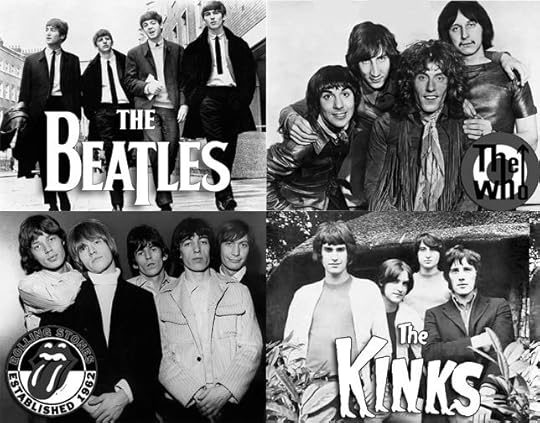
Antler Lodge had always been a country music venue. The rustic, intimate, hall, attracted large, enthusiastic crowds, with their talented live bands, and memorable evenings of western-style square dancing. As more and more young people gravitated toward rock and roll music, the crowds at the nearby Rideau Ferry Inn began to grow in leaps and bounds. The Rideau Ferry Inn featured live rock and roll bands, or disc jockeys, and by the late 1960s and early 1970s enjoyed the lion’s share of the weekend business. Country and western music, during those years, lost its appeal with the majority of the young crowds; although it remained as well-loved as ever, with the older generation.
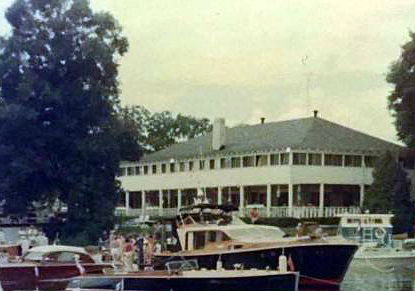 Rideau Ferry Inn
Rideau Ferry InnThe once hugely popular country dance hall was simply not able to compete with the cutting-edge music at the Rideau Ferry Inn, or the latest rock groups playing at the Perth arena or Farrell Hall, like Max Webster, April Wine and Lighthouse. The declining business continued to operate on a smaller scale through the summer of 1975, but by August of 1976 Antler Lodge had given up, locked its doors, and was up for sale. A small ad in the real estate section of the “Perth Courier” was published on Thursday, August 5th: “Antler Lodge, Rideau Ferry, approx 6 miles from Perth. Stone fireplace, maple floor, stage and lunch counter.” Two years later, in 1978, the Lodge was still for sale – “This once thriving lodge is situated on a one acre lot. Inquire today. $35,000.”
………
It was shortly after midnight on Friday, October 9, 1981, when the Bathurst, Burgess, Drummond and North Elmsley (BBDE) Fire Department received the call. According to Fire Chief Harold Jordan, flames were shooting through the roof of Antler Restaurant, within six minutes of the call. Eighteen local fire fighters responded to the call, bravely battling thick smoke and hot, scorching flames; but according to Harold, “We couldn’t save anything.”
 Perth Courier, October 9, 1981
Perth Courier, October 9, 1981………
“The local fire department was unable to establish the cause of the blaze, and it remains a mystery why the Ontario Fire Marshals were never called in to investigate the source of the fire that completely leveled Antler Lodge.”
……….



…………………
** The fact that there was never an investigation into the cause of the fire that destroyed this beloved dance hall, remains a mystery even today!
………………..
photos of Antler Lodge, used with permission – Graeme Hoatson Beattiephotos of Dick and Margaret ‘Marnie’ McLean, owners of Antler Lodge, used with permission of Carol Ann Moore McDonald (Carol is the niece of Dick and Marnie McLean, on her mother’s side)photos of Orok-Kehoe wedding, used with permission – Beryl Orokphoto: Antler Lodge poster – printed by Thompson Printing, Perth, used with permission – Jim Winton………………
(this story is an excerpt from the book ‘Lanark County Connections: Memories Among the Maples’ – available:The Book Nook, 60 Gore St. E., Perth, Ontario: https://thebooknookperth.com/product/lanark-county-connections-arlene-stafford-wilson/

also at:
Spark Books & Curios, 76 Foster Street, Perth, Ontario https://sparkperth.ca/
and
The Perth Museum, Gore St., Perth
……………..
For more information on dance halls and musicians in Lanark County:
more on Lanark County Dance Halls
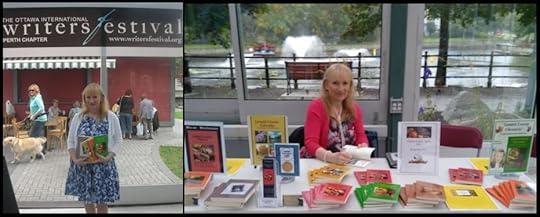
Arlene Stafford-Wilson
Honorary Life Member, Lanark County Genealogical SocietyLanark County Pioneer Families Humanitarian AwardFrancois Bregha Storyteller AwardHeritage Perth Architectural Conservation AwardMember, Association of Professional GenealogistsAuthor of : “Lanark County Christmas”, “Lanark County Comfort”, “Lanark County Collection”, “Lanark County Calling”, “Lanark County Classics”, “Lanark County Connections”, “Lanark County Calendar”, “Lanark County Chronicle”, “Lanark County Kid”, & “Recipes & Recollections”, “Lanark County Kitchen: A Maple Legacy from Tree to Table, and “Lanark County Classrooms: Remembering Our School Days”.June 20, 2025
Irish Summer Solstice
Summer Solstice
Many of our Lanark County ancestors came from Ireland, and brought their customs and traditions with them to their new home in Upper Canada. Although they were mostly Roman Catholic and Protestant in religion, some still held their beliefs in the old ways, going back to the times where the early Irish marked special days, like the Summer Solstice.
It is the longest day of the year, the time when the sun reaches its highest position in the sky in the Northern Hemisphere. All across Ireland, the summer solstice is marked by bonfires along the sides of the road, and in back yards.

Being one of the eight sacred days in Celtic tradition in Ireland crowds gather on the Hill of Tara to celebrate.
In ancient pagan times in Ireland, the Summer Solstice symbolized that the power of the sun was at its highest point and it was believed to be a sacred day. The Hill of Tara was thought by worshippers to be the homeland of the gods and an entrance to the world beyond, filled with eternal joy.
Hill of Tara, Ireland
Boyne Valley, County Meath
The Hill of Tara is one of the sites of importance at the Irish Summer Solstice. A sacred place, once known as the seat of the high kings of Ireland. All of the old Irish roads lead to this ancient ceremonial site.
Legends say that St. Patrick, the Patron Saint of Ireland, journeyed there in the fifth century. As Christianity became the main religion over the centuries, Tara’s role became symbolic. Its great halls and grand palaces have disappeared and only the circles and ridges in the earth remain.
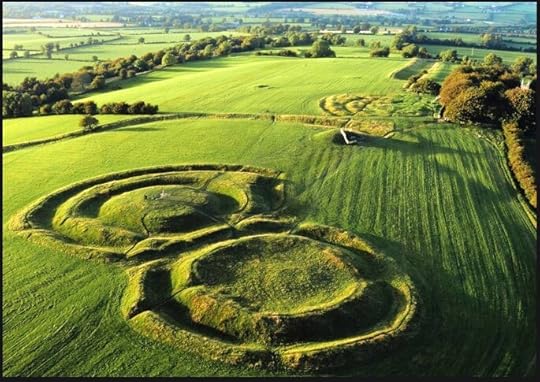
Conn the Druid
According to the legend of Conn, the Kingship of Ireland was granted by the Otherworld. Conn, his druids and his followers, known as “poet seers”, were on a mission to protect Ireland from the people of the “Otherworld”, and they built the ramparts at Tara. Old myths say that Conn stepped on a stone and then cried out several times. Each cry was said to represent a descendant of Conn’s that would become a High King. One of the virtuous gods, known as Lug, ordered the beautiful goddess Medhbh, to serve Conn a drink of ale from her vat, then to offer each of Conn’s successors a drink from her vat until the Day of Judgement.
Rural Ireland
In rural Ireland, people gather for a local bonfire and celebrate the longest day of the year with song and dance, food and drink.
The importance of Summer Solstice in Ireland goes back to the ancient Celtic society and their connection to agriculture and crops. They relied on the sun to grow their food, at a time when people lived closer to nature and were more nearly tied to the forces of the earth, water, and air.
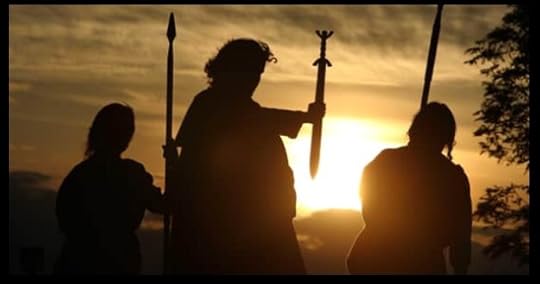
In Pagan folklore, they believed that evil spirits walk the Earth more freely on the solstice, so people wore protective garlands of herbs and flowers to ward them off.
Summer Solstice Meal
A traditional Summer Solstice meal is made with simple ingredients – meat, potatoes, and carrots.

Irish Summer Solstice Stew
3 lb of lamb or beef, cut in 2-inch pieces
2 lb potatoes, cut
1 lb carrots, cut in bite-sized pieces
4 c broth or stock
3-4 Tbsp oil
salt and pepper
May add herbs of choice – thyme, bay leaves, or tarragon
Method
350 F oven
Brown meat in heavy pot and set aside
Add onions and carrots to pot and lower heat, season with salt and pepper
Cook for five minutes
Add meat to roasting pan, add vegetables and broth
Cover and cook for 1 ½ hrs. until meat is tender
Skim any fat from top of broth with spoon
Garnish with fresh herbs if desired
Solstice Drink
For a traditional Irish Solstice celebration, serve Irish whiskey in a ceramic cup.
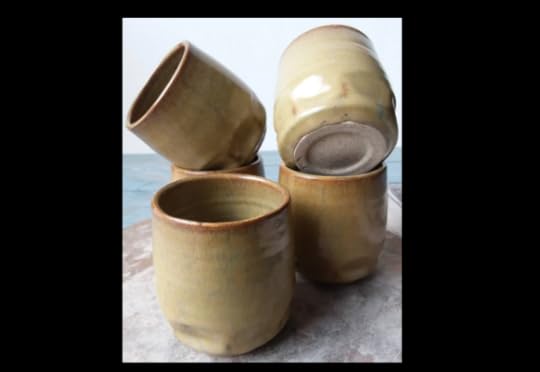
Irish Summer Solstice Blessing
On the shortest night and the longest day,
May bright summer blessings come your way.
Whether you travel to one of Ireland’s sacred places for the Summer Solstice, or if you celebrate at home with some traditional food and drink, may the solstice mark the beginning of a happy summer, with warm pleasant days and memorable nights.
Sláinte – “To your health!”
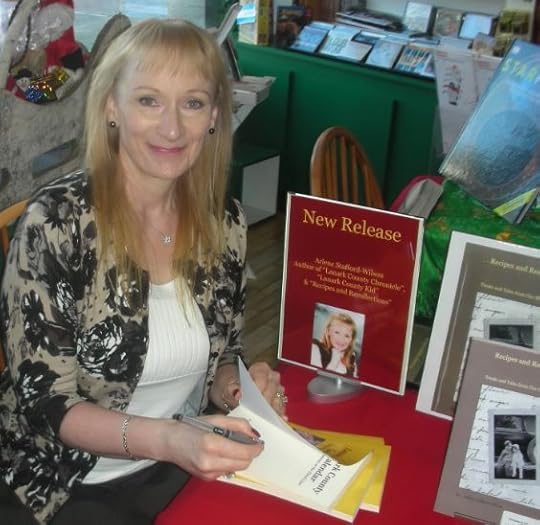
Arlene Stafford-Wilson
Honorary Life Member, Lanark County Genealogical Society
Lanark County Pioneer Families Humanitarian Award
Francois Bregha Storyteller Award
Heritage Perth Architectural Conservation Award
Member, Association of Professional Genealogists
Author of : “Lanark County Christmas”, “Lanark County Comfort”, “Lanark County Collection”, “Lanark County Calling”, “Lanark County Classics”, “Lanark County Connections”, “Lanark County Calendar”, “Lanark County Chronicle”, “Lanark County Kid”, & “Recipes & Recollections”, “Lanark County Kitchen: A Maple Legacy from Tree to Table”, and “Lanark County Classrooms: Remembering Our School Days”
June 19, 2025
Great Aunt Clara’s Late June Roses
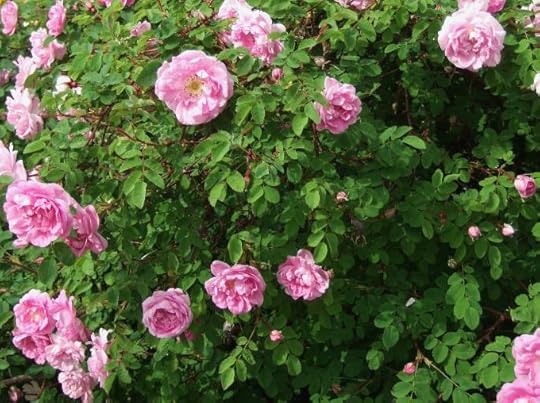
Although it didn’t look like much until late in June each year, around the third or fourth week of the month, the old rosebush, planted by Dad’s Aunt Clara Richards Carberry, sprang reliably back to life. Great Aunt Clara had planted the rosebush back in the 1940s, along our fence, on the east side of the house, under the poplar trees.
It was an uncertain time when she planted that rosebush, the years between 1939 and 1945, when World War II raged on, separating families from loved ones, and prematurely ending young lives, as they fought bravely, on the front lines in Europe.
 Stafford House, 1947, after WWII
Stafford House, 1947, after WWIIBy the time that I was old enough to be aware of the rosebush, it had spread, as perennials will, and imparted a bright pink show of fragrant roses that stretched for several yards, along the old fence. For the entire five decades that we lived in the house, that rosebush bloomed faithfully. Without any pruning or watering, it gave us a lovely fuchsia display, each year, shortly after the summer solstice had passed, as though that was its signal to begin to bloom.
Maybe in such an unsettled time in our history, Clara wanted to create some beauty that would last; something predictable and steadfast; something she could count on.
So the rosebush bloomed like clockwork, late in June, each year for decades, watching silently from its sheltered patch under the poplars, along the fence, as one by one we finished our years in school, and left the old homestead, to go out and make our way in the world. It watched all five of us come and go, and it thrived long past that time, for another quarter of a century, until our father passed away, and our Mother sold the house, and moved to town.
With a legacy like that, how could any of the short-lived ‘annual’ plants ever compare to this faithful old perennial, planted by Clara, so many years ago? More importantly, how could we ever forget those bright, pink, fragrant roses, and how they graced the edge of our yard, so beautifully each year, late in June?
……
Clara Mary Richards Carberry (1891-1983), was the daughter of Thomas Richards, a Drummond Township School Trustee, and his wife, Catherine McKittrick. In 1938, she married Thomas Carberry, son of Michael Carberry and Bridget Lynch. The Carberry family were among the first to settle in Ferguson’s Falls, and Tom’s grandfather was among a group of young men who came from southern Ireland who made a pact to work together and help each other achieve success. They were known as the Seven Irish Bachelors.
Clara’s sister, Anastacia, ‘Stacy’ Richards (1893-1954), married Michael Vincent ‘Vince’ Stafford (1884-1949) in 1912, and they had three children: Peter, Mary Catherine ‘Casey’, and Tobias ‘Tib’. (Michael Vincent ‘Vince’ Stafford was named after his uncle, Father Michael Stafford, known as the ‘Apostle of Temperance’)
“Great Aunt Clara’s Late June Roses”, is an excerpt from: “Lanark County Calendar – Four Seasons on the Third Line”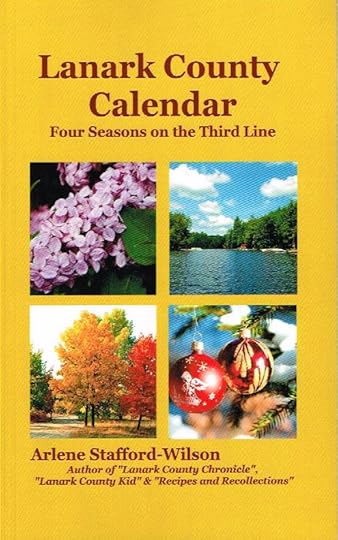
Arlene Stafford-Wilson

Honorary Life Member, Lanark County Genealogical Society
Lanark County Pioneer Family Humanitarian Award
Francois Bregha Storyteller Award
Heritage Perth Architectural Conservation Award
Member, Association of Professional Genealogists
Author of : “Lanark County Christmas”, “Lanark County Comfort”, “Lanark County Collection”, “Lanark County Calling”, “Lanark County Classics”, “Lanark County Connections”, “Lanark County Calendar”, “Lanark County Chronicle”, “Lanark County Kid”, & “Recipes & Recollections” and “Lanark County Kitchen: A Maple Legacy from Tree to Table”, and “Lanark County Classrooms: Remembering Our School Days”
June 15, 2025
Dad: A Father’s Day Tribute
 Tobias ‘Tib’ ‘Tim’ Stafford – 1918-1992
Tobias ‘Tib’ ‘Tim’ Stafford – 1918-1992In the quietest moments, without trying to teach, life’s lessons unfolded and we were imprinted forever with a strong work ethic, the power of a kind word, and the value of integrity….
Who was he? What was he like? These are the questions that might be asked by curious grandchildren, and great-grandchildren, and their children in the years to come. His descendants will walk this earth, long after our time has passed, when those who knew him in this life are themselves just a memory, a grainy photo in someone’s dusty old album, or a name that’s mentioned from time to time when family members gather together.
Early Settlers
His ancestors came to Canada in 1816 and settled in Drummond Township, not far from Ferguson Falls. Both sides were from southern Ireland, and both Roman Catholics, weary of the treatment of their kind by the British, and longing for freedom and the opportunity to thrive and prosper.
Dad was the youngest son, of a youngest son, of a youngest son of the pioneer settler, he was named for.
He attended school in Prestonvale, and played ball on the local team, and the Innisville team were their greatest rivals.
Church attendance was non-negotiable and held at St. Patrick’s each Sunday without fail.
His Ancestors
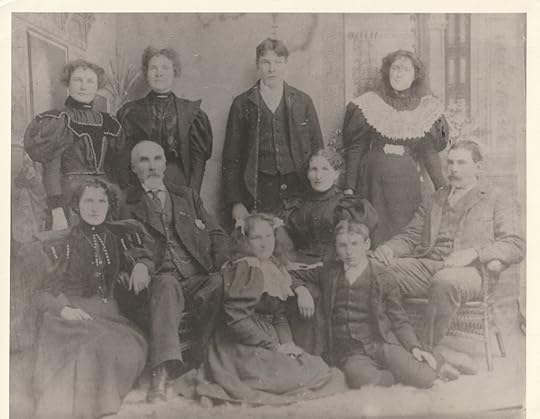
photo: 1896, family of Thomas Stafford & Mary Carroll Stafford (seated in the middle) Thomas was the youngest son of pioneer settler Tobias Stafford and Elizabeth McGarry, 11th concession, Lot 10, Drummond Township. Seated in the front is Dad’s father, Michael Vincent ‘Vince’ Stafford.
(back row: Anne, Mary, Thomas Julia, middle row: Margaret beside her father, and Peter beside his mother, Anastasia seated beside Vince in the front row)
1932 Prestonvale Ball Team
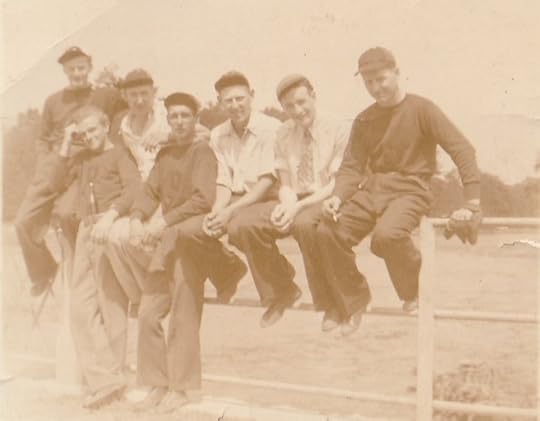
The Prestonvale ball team in 1932, Tobias ‘Tib’ Stafford seated 2nd from the end, wearing a tie.
(other players unknown, but may be some of the same players as the 1934 team below)
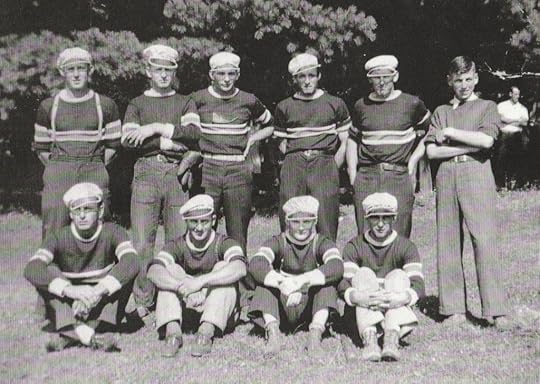
Prestonvale Baseball Team 1934
Back row: Bob McEwen, Mansell Horricks, Henry McFarlane, Tobias ‘Tib’ Stafford, Roy McEwen, Dawson Horricks
Front row: Ossie Rothwell, Billy Tullis, Lloyd Horricks, John Dickenson
St. Patrick’s Ferguson’s Falls
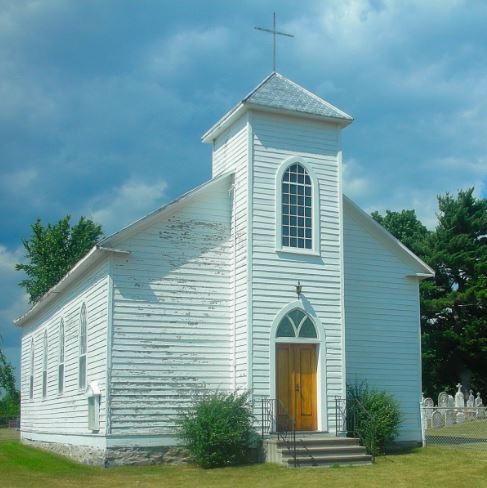
St. Patrick’s Church, Ferguson Falls, Ontario – where Dad and his family attended services
War Years
He enlisted in WWII, in the R.C.A.F., where he met our mother, while they were both stationed at the No. 8 Bombing and Gunnery School in Lethbridge, Alberta. They married in 1943, and he was posted overseas to Bournemouth, England.
Stafford House
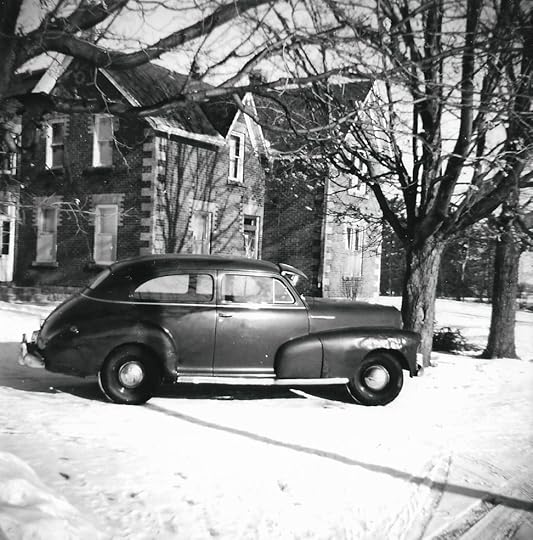
In 1946 – Dad was discharged from the Royal Canadian Air Force, and he, Mother, and their two babies, Tim and Judy, moved to the home they would occupy for the next 50 years – the Stafford House.
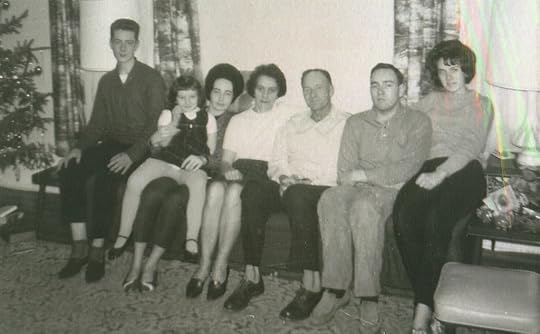
By the 1960s, the family had grown! Left to right – Roger Stafford, Arlene on Judy’s lap, Mother – Audry (Rutherford) Stafford, Dad – Tobias ‘Tib’, ‘Tim’ Stafford, Tim Stafford, and Jackie Stafford.
Dad farmed the land for some years, then the cattle became ill with tuberculosis and had to be destroyed. He hauled milk to local cheese factories, spent some years working on the railroad, a couple of decades delivering milk for Chaplain’s Dairy in Glen Tay, then finished his workdays at Wampole Pharmaceutical on Hwy 7, in 1983, when he retired.

1968 – their 25th wedding anniversary

1988 – 45th Wedding Anniversary – with Korry’s farm in the background
What was he like?
Dad was soft-spoken, and for the most part was even-tempered and easy to get along with. His family was very important to him and he enjoyed spending time together at Christmas, birthdays, and other special occasions. He kept his cars in immaculate condition and loved to take us all for Sunday drives into the country. He enjoyed nature and called us over to see a hummingbird flutter, or a sun-dog in the sky. He loved to hear the birds calling, high up in the maple trees, and didn’t mind the bats swooping around on hot summer evenings. He took great pride in the appearance of his lawn and enjoyed cutting it and trimming the long grass.
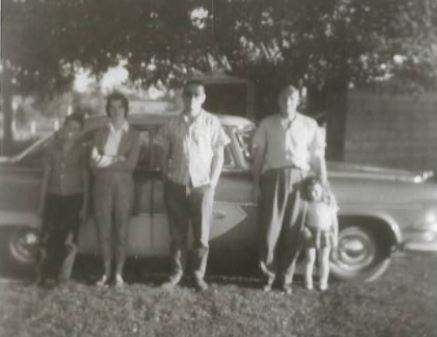 Ready for a Sunday Drive – L to R: Roger, Jackie, Tim, Dad, Arlene
Ready for a Sunday Drive – L to R: Roger, Jackie, Tim, Dad, ArleneHow do I remember him on Father’s Day?
He was the slayer of dragons who hid in the dark corners of my room at night. He was the one I ran to during thunderstorms, who distracted me from my fears by showing me his watch with the hands that glowed in the dark. He was a night-time story-teller and a bed-time book-reader. He was the tour-guide on Sunday drives, and the local historian on trips to the cemetery. He believed that everyone deserved a treat – every day, and he brought home chocolate bars, tucked into his lunch pail, for each one of us, every evening. He was a great believer in common sense and had a surprisingly simple solution for almost every problem. He showed us how a man treats a woman as he complimented our mother as though they were still dating. He got up each day, dressed neatly, and went off to work, and I never once heard him complain about his job, although I’m sure there were times that he could have.
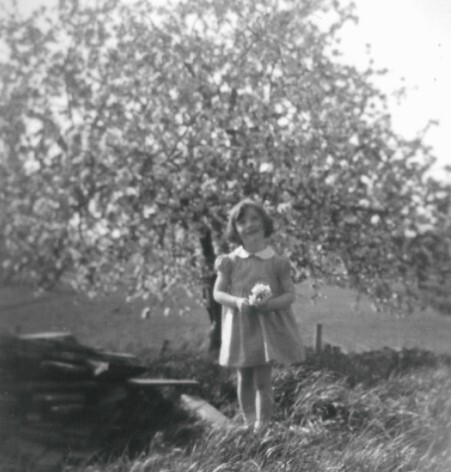
And so as we pause today to thank the fathers of the world, some who are still here, and as we also remember those who are no longer with us, I will finish with a quote that reminds me of this quiet, thoughtful man who we called, “Dad”:
“He didn’t tell me how to live,
He lived, and let me watch him do it”
Clarence Buddington Kelland

Honorary Life Member, Lanark County Genealogical Society
Lanark County Pioneer Families Humanitarian Award
Francois Bregha Storyteller Award
Heritage Perth Architectural Conservation Award
Member, Association of Professional Genealogists
Author of : “Lanark County Christmas”, “Lanark County Comfort”, “Lanark County Collection”, “Lanark County Calling”, “Lanark County Classics”, “Lanark County Connections”, “Lanark County Calendar”, “Lanark County Chronicle”, “Lanark County Kid”, & “Recipes & Recollections”, “Lanark County Kitchen: A Maple Legacy from Tree to Table”, and “Lanark County Classrooms: Remembering Our School Days.”
May 6, 2025
Port Elmsley – Drive-In Dreamin’

One night long ago, a friend decided that we should save a few dollars, and put a couple of people in the trunk of a car, so they could get in for free, at the Port Elmsley Drive-In Theatre.
I guess we can just chalk this one up to one of many peculiar things that we did as teenagers. Luckily no one was hurt, but for the three bucks they each saved on admission, it was a pretty undignified way to arrive at the movies.
It’s possible that we weren’t the first ones to try that little stunt. After all, the Drive-In had been open for a long time before any of us had ventured there.
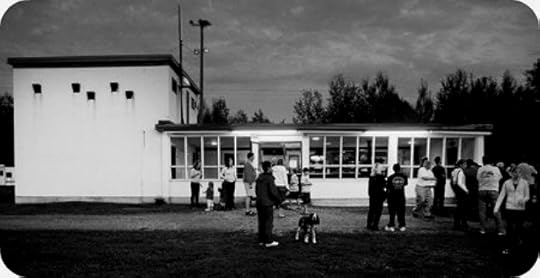
It was in September 1952 that ‘The Perth Courier’ ran a short article about a Drive-In being constructed at Port Elmsley. The article stated that it was the first to be fabricated in this district, and it was built by Gordon White of Ottawa for W.J. ‘Bill’ Williams, of Newboro.

The article went on to say that it would be assembled on a ten acre property, and that the Drive-In would have a capacity for 300 cars. It would feature a design first of its kind in Ontario, where the projector booth would be in a two-story building, nearly 400 feet from the screen. This was a distance that was 150 feet greater than any of the other Drive-In theatres at that time. It was to open the following May of 1953, at a total cost of $75,000. True to their word, they opened on schedule, and called the new Drive-In ‘the Showplace of the Golden Triangle’.
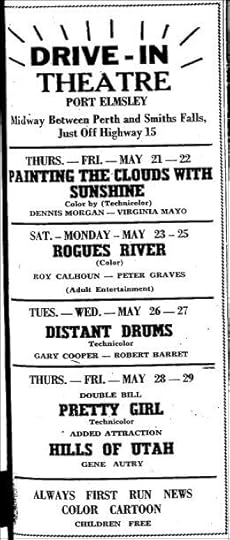
Port Elmsley was indeed a great location for a Drive-In theatre, because it’s situated about halfway between Perth and Smiths Falls. There were always droves of cottagers and tourists staying around Rideau Ferry, and the surrounding lakes in the summer. There were also many residents of the towns and villages nearby, that enjoyed a drive up Highway 15, on a warm summer night, to see some great movies.

Because the Drive-In opened in 1953, many folks had parked in that huge parking lot and viewed many movies on that big screen long before my friends and I ever made it there in the ‘70s. In fact, it was more than twenty years after it opened that it became one of our familiar haunts each summer, as we passed the nights away, under the stars.
Some of us were lucky enough to have gone to the Drive-In as children, dressed in pajamas, playing on the teeter-totter and swings between the first row of cars and the giant screen. As the sun sunk low in the sky, we were having the time of our lives. What could be better than staying up past your bedtime with a whole bunch of other kids, the aroma of popcorn in the air, and watching the cartoons at the beginning of the show?

Every kid knew the words to the concession jingle ‘Let’s all go to the lobby, let’s all go to the lobby, let’s all go to the lobby, to get ourselves a treat.” When we heard that song it was our cue to start heading back to our parents’ cars, because the movie would be starting soon. By the time they played the Chilly Dilly song, about the big, juicy, dill pickles, we were in the back seat, with our pillows and blankets, all ready for the show to begin. Much to the delight of most parents I’m sure, we were asleep by the time the second feature began, and this allowed them some peace and quiet, and time alone – well, almost alone.

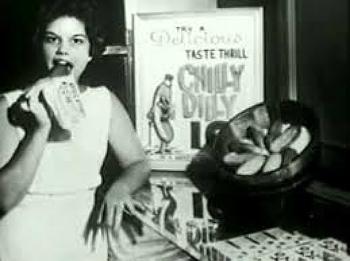
We’d usually begin assembling all of our gear during the afternoon. First, we’d pack up a bottle of Windex, and a roll of paper towels, because there was nothing worse than having a big messy streak or some bugs splattered right in the middle of your window.
Mosquito coils were also vital to a relaxing evening. Because of the speaker hanging off of the front window, we weren’t able to close it all the way, so burning a mosquito coil would take care of any of the little pests that flew into the car. If none of the gang had any, we’d have to head out to Canadian Tire on Highway 7, and pick some up before the show. We’d place one of the little green coils on its small metal stand, set it on the dashboard and light it up. Many years later I happened to read on the side of the package that those coils were for outdoor use only. Oh dear!


A couple of pillows and a blanket, were a nice touch, and made movie-viewing a comfy, cozy event. We’d also bring a small flashlight, because nothing was worse for us girls than stumbling around on the gravel path, trying to find our way to the washroom, on a dark, moonless night; especially right after watching a scary scene in a horror movie. That just didn’t work for us. Sometimes we’d bring a roll of t.p. from home, in case they ran out, which happened once in a while during the all-night movie marathons.

I still recall the crunch of the gravel, as we slowed down to enter through the gates, into the Drive-In, and began scouting for a good spot. A good spot to us was front-row-centre, and enough space for the three cars to park side by side, so that we could socialize. We also had to make sure that all three speakers worked, so we would pull into the spots and test the speakers, otherwise we’d have to move all three cars to a new location, maybe a row behind. Of course every row farther back that you were you would have to contend with people getting in and out of their cars in front of you or turning on their cars to clear their windows because they were fogged up for some reason. So, the best real estate in the lot was the front row, right in the center of the screen, and if we went early enough the best spots would be ours.
I think the lads liked having spots near the front, not just for the sake of the movie, but so that their cars were together, and very visible in the front row. There’s no denying that they all had sweet cars. Those three cars managed to get some looks, touring around town, and had been known to burn up more than a little rubber on the quarter mile runs down Roger’s Road.
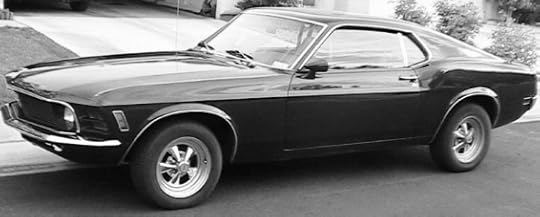
* * *

* * *
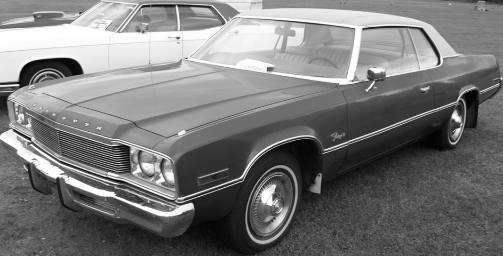
The warm summer air was filled with strains of Foreigner’s ‘Hot Blooded’, or Led Zeppelin’s ‘Stairway to Heaven’, and typically, a little bit of our favourite space-cowboy, Steve Miller, singing “The Joker’; a song that you could say became a symbol of the times. Some have said that it was an era of music like no other, before or since, and the sounds of our generation could be heard throughout the parking lot of the Drive-In, on those sultry summer nights, in Port Elmsley.
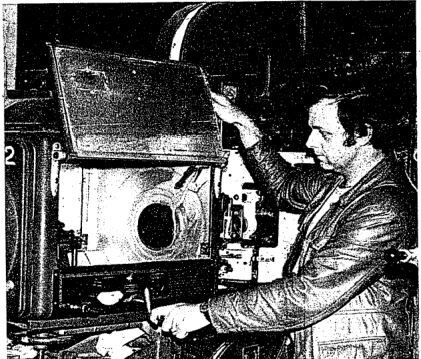
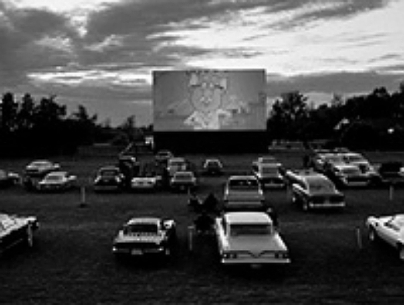
* * *

As the sun slid down lower in the sky, the horizon glowed, first in a dusty pink, then a soft purple. There was always one car that began honking their horn, because they believed that it was dark enough to see the movie. After a minute or two, more people started to honk, and then shortly after that the show would begin.
One of the things that we enjoyed the most were the ‘Dusk to Dawn’ shows, where the first movie would begin at dusk, and the movies would continue all night, until the early morning, when it became too light to see the picture on the screen. The movies were played back to back, and were often horror films like ‘The Exorcist’, or ‘The Omen’, or ‘Jaws’. I recall one night that my friend and myself, even after having consumed large quantities of pop, did not want to use the washroom, just in case that giant crazy shark ‘Jaws’ had somehow compromised the plumbing system out in Port Elmsley. We just weren’t taking any chances.
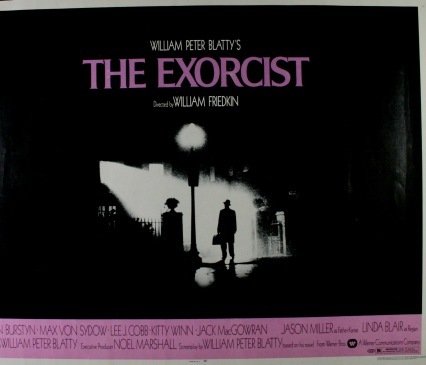
* * *

We saw many nights come and go in Port Elmsley. There were some beautiful, sleek, muscle cars in those days, parked row after row, paint glistening in the moonlight. We made numerous trips to the concession stand, in an attempt to fill our unquenchable teenage appetites. We even had a few scary trips in the dark, giggling on our way to the washroom and back. We screamed a few blood-curdling screams, as did some of the folks in the neighboring vehicles one evening, I recall, as the character Jason appeared in his hockey mask in the thriller ‘Hallowe’en’.
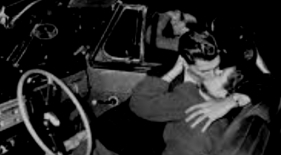
Today, the Port Elmsley Drive-In is one of a handful of drive-ins still operating in Ontario. Leave it to the folks in Lanark County to know a gem when they see one, and to continue to go out, and enjoy movies, under the stars. I hope that in the future that the little kids in their p.j.s, young people, and not so young people, will take the time to visit the drive-in and have as much fun as we did. Take a trip to Port Elmsley and make some of your own memories!
…….
In its heyday, Port Elmsley had many residents, and some of the family names that were common in that area were: Armstrong, Taylor, Stone, Hunter, Weatherhead, Best, Couch, Wicklum, Weekes, VanDusen, Seabrook, Shaw, Sherwood, O’Hara, Moore, Dudgeon, Lavender, Findlay, McTavish, McVeety, Beveridge, and Clements.
…..

Spend a hot summer night at the Port Elmsley Drive-In, and meet some of the fascinating people, with memories from former owner, Jan Stepniak, and recollections from Laura Williams, daughter of founder and owner, Bill Williams. Read their accounts of those special nights under the stars, and what really happened behind the scenes of this beloved local gem, in “Lanark County Collection: Winding Our Way Down Memory Lane”
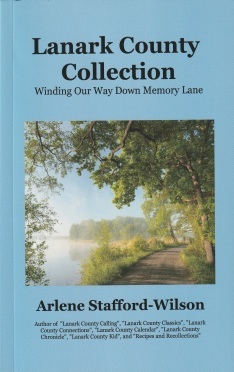

The story “Dusk to Dawn in Port Elmsley” is part of a collection of stories in the book “Lanark County Chronicle”
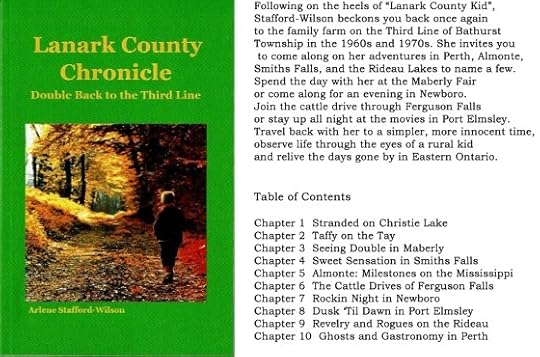
May 1, 2025
North Sherbrooke – Old Days
* * *
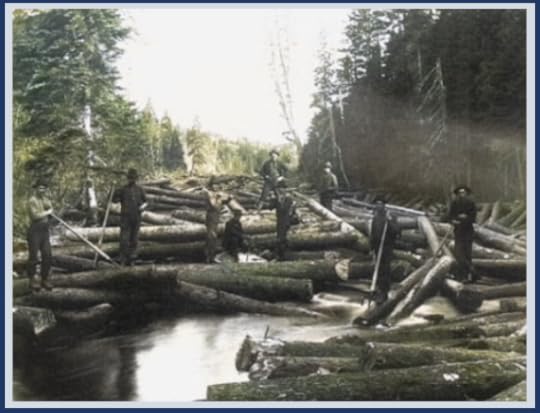
“The Good Old Days in North Sherbrooke”, was transcribed from an article appearing in, “The Perth Courier”, on May 1, 1975, p. 2.
“Nearly half a century has elapsed since I had the privilege of living in North Sherbrooke, Lanark County, in that part of the township in the vicinity of Elphin.”
Elphin was Mann’s Corners
(Elphin was first named Mann’s Corners for early pioneer resident, James Mann, who opened the first general store. The hamlet was renamed in 1861, for Lord George Keith Elphinstone, as a tribute for his service in the Napoleonic War)
“Elphin was originally known as Mann’s Corners. The country is very picturesque with its rolling lands, and maple woods, interspersed with greens. The wooded hills, the green valleys, the pasture lands, the modest fields of grain, and luscious apple orchards surrounding the pleasant farm homes, invite the attention of the traveler to dine upon the landscape beauty.”
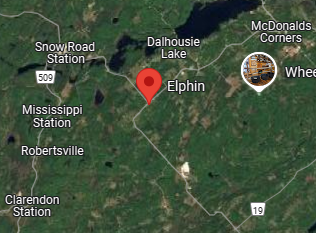
Scottish Settlement
“The original settlers hailed from Scotland – the land of Robby Burns, and like Burns, were bold, upright, and honest. The present generation still carry the Scottish accent as well as the other characteristics of their progenitors. They were a people overflowing with hospitality, tenderness and kindness. The outstretched hand was always ready to help the needy.”

Robbie Burns – Scottish poet
General Store
“The store at Elphin was conducted by the late Peter McIntyre and in a minute annex, J. Shane practiced the trade of shoe-making. The annex becoming too small for his expanding trade, Shane moved about a mile east into a building which had been owned by a gentleman who had the burning impulse of bringing beautiful horses from Western Ontario and selling them for high prices to the Elphin farmers.”

“His profits were high as his costs were only those of getting the horses from the owners without the owner’s knowledge. Persisting in the business, government officials sought his companionship and graciously escorted him to a home near Kingston prepared for such characters as he.“
* * *
North Sherbrooke 1938 – Archie McDougald, barefoot with a foal on the McDougald Farm.
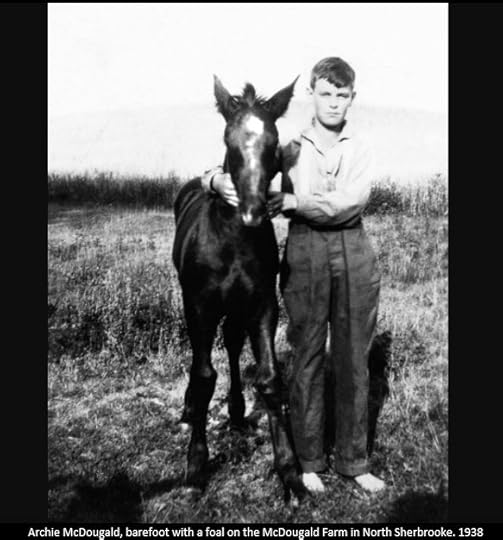
photo: Chris Crain
Blacksmith Shop
“Directly across from McIntyre’s store stood the cheese factory and close by Danny Munro had a blacksmith shop where he was always ready to shoe horses, trade watches or enjoy a smoke. The store was the rendevous for the clan to gather on winter evenings and swap stories. Dunc McVean generally won the grand aggregate, while Jim Brownlee ran a good second.”
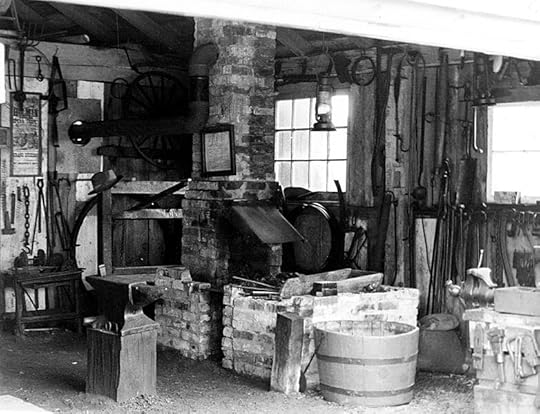
A typical pioneer blacksmith shop
“About fifty yards from the store was a small church built of sided logs (the work of a broad axe), but not in use as the congregation was too numerous to be accommodated within its historic walls. A large hall over a shed was used as a place of worship. Here, Rev. Alex McAulay ministered faithfully to his flock. Will Miller and John Stewart were two of the elders. The people were loyal to their church and the services were well attended.”
School
“About a mile east was the schoolhouse where the village teacher taught his little school for forty pounds a year.”
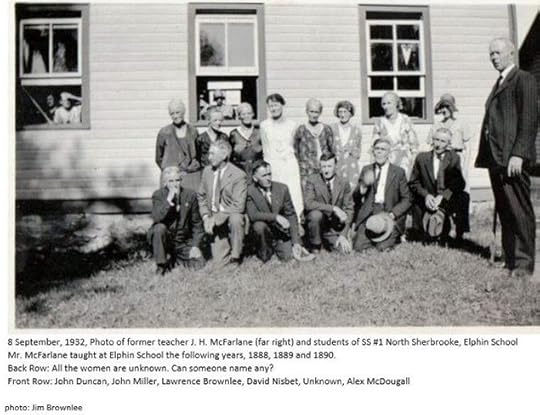
S.S. # 1, North Sherbrooke, Elphin, 1932 – photo: Jim Brownlee
Church
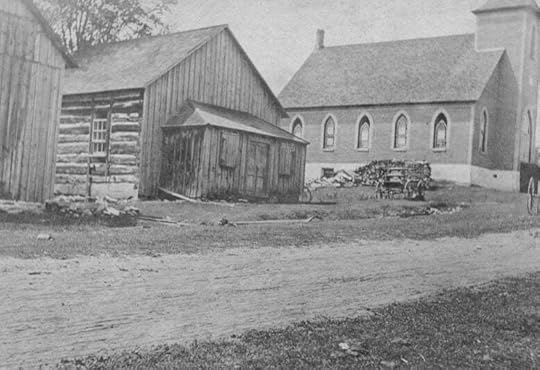
Elphin Presbyterian Church – 1919, photo: Chris Crain
Logging Days
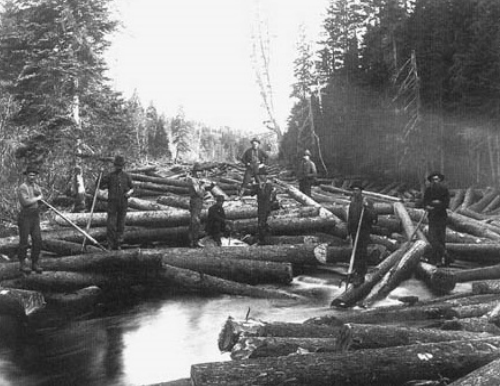
“A little to the north of the highway leading from McDonald’s Corners wended the Mississippi River down which thousands of pine logs were annually guided by the jolly river drivers. The Caldwells of Lanark and McLarens of Perth were the leading lumbermen of that day. Where the Hydro equipment now stands is where the High Falls offered obstruction to the river men.”
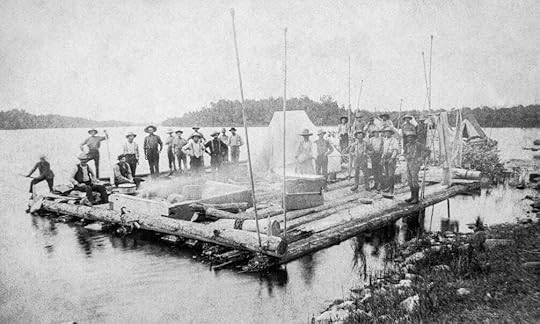
Log Drivers at McIlquham’s Bridge 1890-1910 – photo: Chris Crain
“To overcome this natural obstruction an immense slide was constructed on the north side of the stream down which the logs were run without damage. This slide was the cause of a long drawn and costly lawsuit centering on what is known as the, “Streams Bill”. Such names as McDonald, McIlquham, Barber, Bowes and Greer are known from the head-waters of the Mississippi to the mills of Carleton Place. Peter McIlquham of Lanark, I believe, is the only one of those hardy foremen who can now answer the ‘Roll Call’.“
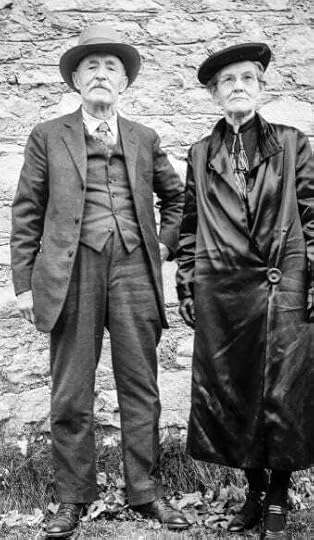
Peter and Minnie McDougall, North Sherbrooke, (married 1891 in Lanark) Peter was a log-driver on the Mississippi River, Lanark County. Peter was born in 1858.
(photo: Chris Crain)
Geddes Mill
“Down the stream from the High Falls stood Geddes’ four mill, where the stone process of making flour was in its hey-day.”

millstone – used for grinding flour
Dalhousie Lake
“Here at the rapids is Dalhousie Lake – now renowned as a summer resort – then resplendent in its natural beauty.”

Loggers at Dalhousie Lake
“Around this section, we find these families: Geddes, Smith, Paul, McDougall, Duncan, and Millar; pioneers of large muscular frame, whose hospitality was in keeping with their frame.
In the immediate vicinity of Elphin, George Wilson, Postmaster, James Brownlee, D. McVean, Jegg Pitcher, R. Balfour, N. McFarlane (carpenter), R. Campbell, W. Smith, T Wilson and T. Izatt performed the daily farm tasks. Settled on surrounding farms were: H. Weir (weaver), J. Millar (drover), Duncan Ferguson, Doug McVean, A. Ferguson, William Nisbett, and Sandy Crawford – the precentor in the kirk.
These pioneers have all departed, so have captains and kinds, but the richness of humanity’s texture is strengthened more by the quiet, unselfish life than by that of those who stride in the course to the sound of the trumpets. Their power for creating wealth is dead, but the hospitality, the kindness and the tenderness marches on.“
Wool
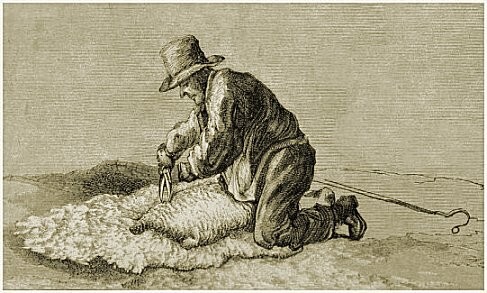
“It was not uncommon to see the wool taken off the sheep, carded by hand, made into rolls, spun into yard on the spinning wheel,
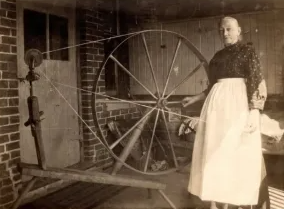
and knit into mittens and socks or sent to H. Weir to be woven into cloth.“
Maple Sugar
“Sugar-making was carried on somewhat differently nearly fifty years ago. Troughs were made for catching the sap. Spiles were made of wood and the tapping was done by means of an auger and gauge. The sap was boiled in metal or iron coolers arranged in rows of five or six. These coolers were hung over immense fires which added brilliancy and delight to the work.”
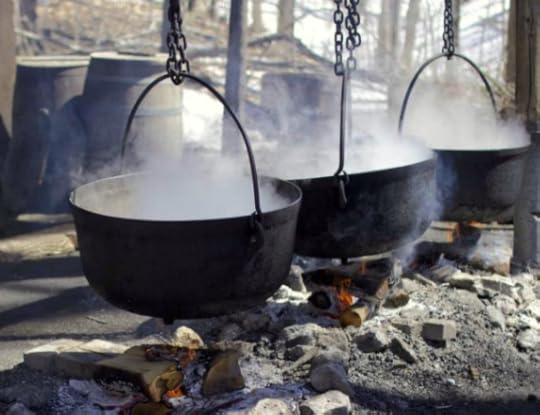
Farming
“The farm implements consisted of plough and harrow, scythe, cradle, rake, etc. Few owned mowing machines and reapers.
Transportation was not by motor car, but by democrat or wagon drawn by horses. Great pride was taken by the farmer in having beautiful horses full of pep and action.“
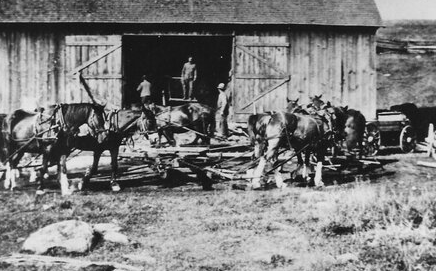
Socials
“These people had their amusements. In summer they had their social gatherings and picnics, in which the whole neighbourhood heartily participated and thoroughly enjoyed. The picnic grounds was McDougall’s Grove, an ideal place, now only a memory, as the woodman’s axe has wrought a change.
In the autumn, corn-husking and apple-paring followed by the old fashioned square dance, whiled away many a pleasant hour. Young and old mingled in the whirling maze, exhilarated by the lively strains of, “The Soldier’s Joy”, and “The Gay Grandsire Whisked Beneath the Burden of Threescore”.
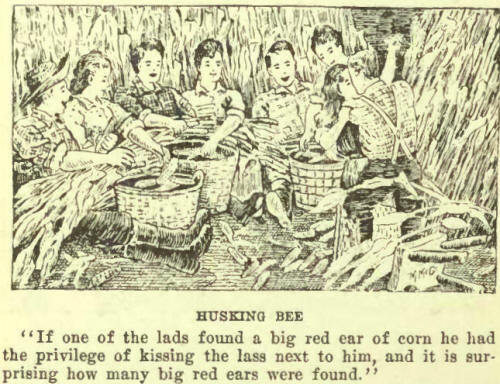
“Winter brought sleigh-riding when the horses’ hoofs kept time to the musical chimes of the merry bells. The high mountain at the back of McLaren’s Depot provided an ideal slide for toboggans.”

“Here the young people enjoyed the clear, frosty nights sliding down the mountain side for the distance of a mile, then laboriously pulling the toboggan back to the summit to repeat the operation. The air was filled with mirth and jollity.”
Dentist
“Eby Wilson was the first dentist for the neighbourhood, at least in all emergencies requiring extraction, having acquired the art in uprooting boulders, by means of the plough.’
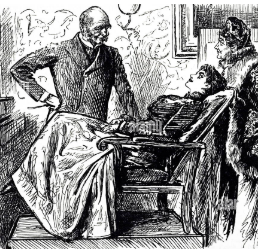
“His instruments consisted of a peculiar shaped lance for tearing the gums, and what was known as a key for extracting operations. When he knee was planted firmly on your chest, it was considered an anesthetic, for agony when at its height is mute. But why linger on this painful scene?”
The Scots
“The Scottish people are said to thrive on porridge, the Bible, and the shorter catechism, but these good people were progressive and required a more varied diet, and for their daily menu had porridge, the Bible, the shorter catechism, and “The Perth Courier”.”

“Gone are those settlers of nearly fifty years ago. No more they lift the latch to welcome strangers. Their contribution to life and to the world has been made quietly, humbly and persistently.”
“Let not ambition mock their useful toll
Their homely joys and destiny obscure
Nor grandeur bear with a disdainful smile
The short and simple annals of the poor.“
The article, below, as it appeared in ,”The Perth Courier” – anonymous

(article from, “The Perth Courier” transcribed on this page)
Early Residents:
McDougall
Duncan McDougall (1853-1935). (Married to Jessie Smith) Photo taken on the McDougall Farm, North Sherbrooke, in the late 1800s. Later in the family’s, history, a McDougall married a McDougald, so the farm name eventually changed to McDougald. At the time of this photo, it was McDougall.

photo: Chris Crain
Ferguson
Mary (Ferguson) McIntyre was born in North Sherbrooke Township, during the early days of the settlement, daughter of Duncan Ferguson and Violet McDougall. both natives of Scotland. During her life she saw the original log cabins gradually change into more comfortable farm homes, and witnessed the evolution in farming methods. She married Peter McIntyre (1825-1897) native of Perthshire, Scotland, and they had one daughter, Violet, named for her grandmother. Violet married Walter Geddes, son of Adam Geddes and Jane Sim.
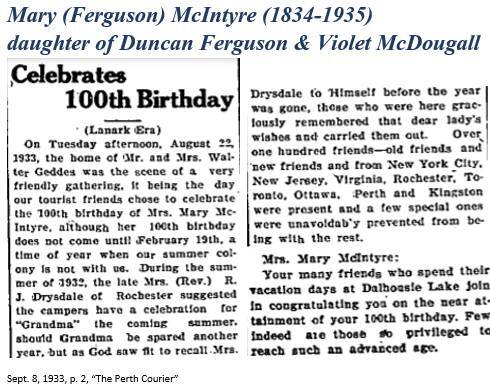
McDougald
North Sherbrooke 1912
L-R May McDougall, Mary Campbell, Cora Campbell, Annie Jackson and Tom Izatt.
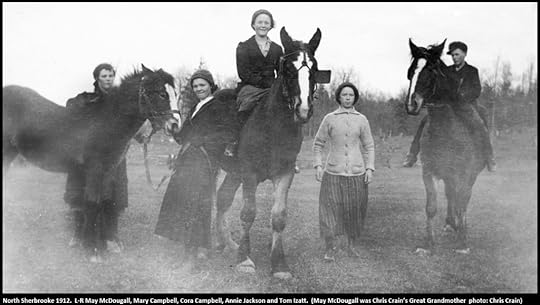
(May McDougall was Chris Crain’s Great Grandmother – photo: Chris Crain)
* * *
On the McDougald farm, Lot 13, Concession 1, North Sherbrooke. C. 1953.
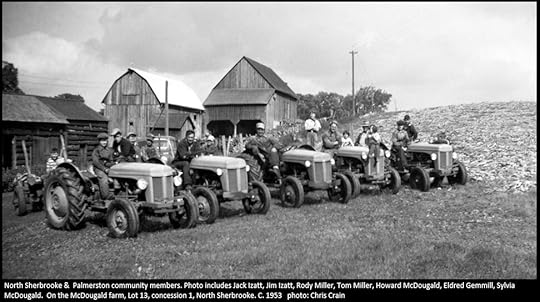
North Sherbrooke & Palmerston community members. Photo includes: Jack Izatt, Jim Izatt, Rody Miller, Tom Miller, Howard McDougald, Eldred Gemmill, Sylvia McDougald.
photo: Chris Crain
* * *
North Sherbrooke – 1945: Archie, May, Phyllis and Howard McDougald and visitors.
Taken at the McDougald farm in North Sherbrooke.
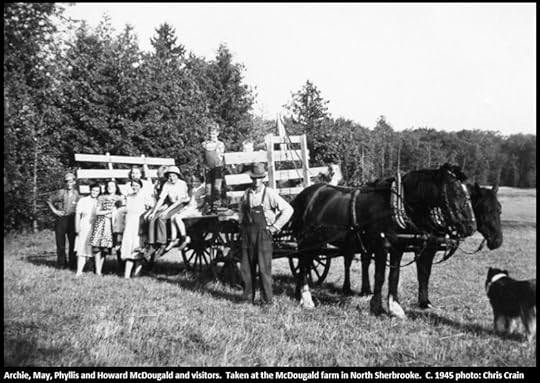
photo: Chris Crain
Paul
One of Lanark County’s legacy maple producers, Raymond Paul, and his wife, Minnie. Raymond’s ancestor, Montgomery Paul, fought under the Duke of Wellington in the Napoleonic Wars, and was one of the earliest settlers in Dalhousie Township. Raymond was the Reeve of Dalhousie and North Sherbrooke, respected in his community. He was named one of the “Outstanding Men of the Ottawa Valley”.
Raymond Paul (1891-1976) and his wife, Minnie Paul (1897-1969) Their children: Elmer (1918-1973), Verna (1919-2005), Mary Eileen (1922-2007) and Brien (1930-2021).
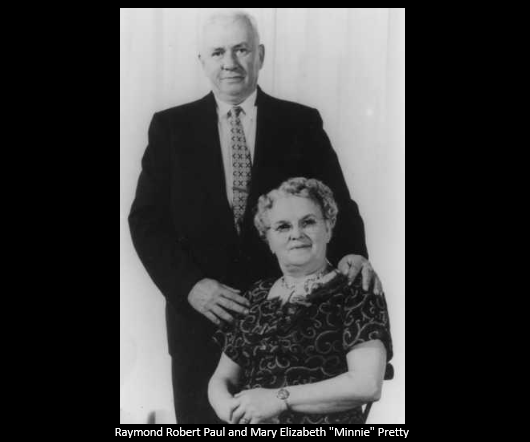
OXTOBEE
Well-known Elphin area couple – Ted and Irene Oxtobee – owned and operated the general store in Elphin.
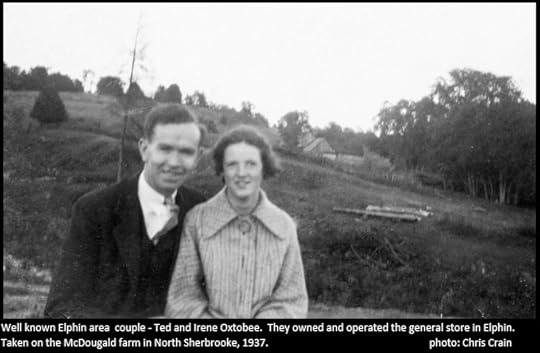
Photo taken on the McDougald farm in North Sherbrooke, 1937.
photo: Chris Crain
Name
North Sherbrooke Townships, was surveyed in 1819, and was named for General Sir John Coape Sherbrooke (1764-1830). He served for 35 years in the war with France, was Lieutenant Governor of Nova Scotia from 1811-1816, and served as Governor in Chief of Canada from 1816-1818, before retiring for health reasons.
In 1997, North Sherbrooke, along with Lavant, Dalhousie, Darling, and Lanark village were part of a reorganization of townships, and were joined to form the Lanark Highlands.
North Sherbrooke’s proud traditions live on through those whose ancestors settled in this idyllic and peaceful area of Lanark County.
Families
Some family names of North Sherbrooke: BALFOUR, BARBER, BOWES, BROWNLEE, CAMPBELL, CRAWFORD, DUNCAN, FERGUSON, GEDDES, GEMMILL, GREER, IZATT, JACKSON, MANN, MCAULEY, MCDOUGALD, MCDOUGALL, MCFARLANE, MCILQUHAM, MCINTYRE, MCLAREN, MCVEAN, MILLAR, MILLER, MUNRO, NISBET, OXTABEE, PAUL, PITCHER, SHANE, SIM, SMITH, STEWART, WEIR, WILSON
* * *

Arlene Stafford-Wilson
Honorary Life Member, Lanark County Genealogical Society
Lanark County Pioneer Families Humanitarian Award
Francois Bregha Storyteller Award
Heritage Perth Architectural Conservation Award
Member, Association of Professional Genealogists
Author of : “Lanark County Kitchen: A Maple Legacy from Tree to Table”, “Lanark County Christmas”, “Lanark County Comfort”, “Lanark County Collection”, “Lanark County Calling”, “Lanark County Classics”, “Lanark County Connections”, “Lanark County Calendar”, “Lanark County Chronicle”, “Lanark County Kid”, & “Recipes & Recollections”, and “Lanark County Classrooms: Remembering Our School Days”
April 23, 2025
Thompson’s Maple Shortbread

Photo: Thompsontown Maple
Thompson Family
The first generation of the Thompson family to arrive in Upper Canada was Thomas Thompson (1801-1889), from Glasgow, Scotland. He was one of the early pioneer settlers in Lanark Township, and he came from a family of gentleman farmers who owned and operated a small inn. He settled on the East half of Lot 20, Concession 11 and married Grace (Scoular) Thompson (1812-1894). Grace journeyed from Scotland with her parents in 1820, part of a group known as the Lanark Society Settlers.
Thomas developed a segment of his land as a sugar bush, and reported in the 1871 Census, that he had produced 100 pounds of maple sugar. Thomas and Grace’s two daughters, Martha and Mary were keen maple sugar makers, and the old stone fireplace where Mary and Martha boiled their sap into syrup and sugar may still be seen today on Lot 21 of the Thompson property.
Winner of the Golden Spoon!
The Thompson family has a long history of producing award-winning maple products, and our recipe today comes from Leann Thompson, a descendant of Thomas and Grace. Leann’s recipe for Maple Whipped Shortbread was winner of the “Golden Spoon” in an annual cookie competition, and the Golden Spoon award sits proudly on her kitchen shelf today. It’s been said that her shortbread cookies are “so soft that they melt in your mouth”. It’s no wonder that someone with such a long and rich Scottish heritage would produce such perfect shortbread!
Leann Thompson’s
Maple Whipped Shortbread
1 cup butter (room temperature)
1 1/2 cup flour
1/2 cup granulated maple sugar
(Perhaps the secret to her recipe is using granulated maple sugar!)
Combine all ingredients and beat for ten minutes. Drop teaspoons of batter onto a cookie sheet. Bake at 350°F for 10 minutes (or until bottoms are lightly browned)
Top with maple butter for an extra maple treat!
A link below to find a variety of sizes of granulated maple sugar used by Leann in her recipes.

Granulated Maple Sugar – Thompsontown Maple
And so, the tradition of making Shortbread continues down through the generations of this legacy maple-producing family. From the early days of pioneer, Thomas Thompson, his daughters Mary and Martha, and continuing today with their descendant, Leann Thompson, and her award-winning shortbread.
Our Lanark County Maple Syrup producers have a long and rich history, and are the reason that Lanark County has been named, “The Maple Syrup Capital of Ontario”.
For more stories and recipes on Lanark County’s legacy maple farmers:
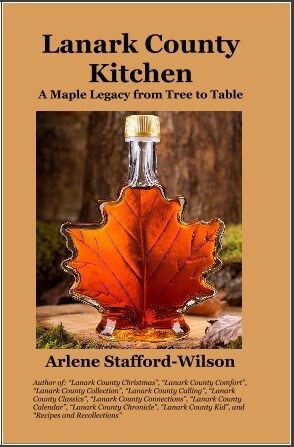
*
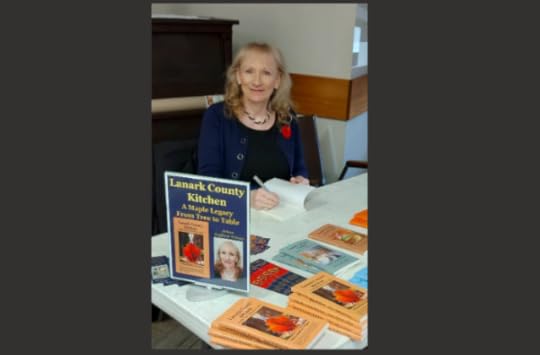
Arlene Stafford-Wilson
Honorary Life Member, Lanark County Genealogical Society
Lanark County Pioneer Families Humanitarian Award
Francois Bregha Storyteller Award
Heritage Perth Architectural Conservation Award
Member, Association of Professional Genealogists
Author of : “Lanark County Kitchen; A Maple Legacy from Tree to Table”, “Lanark County Christmas”, “Lanark County Comfort”, “Lanark County Collection”, “Lanark County Calling”, “Lanark County Classics”, “Lanark County Connections”, “Lanark County Calendar”, “Lanark County Chronicle”, “Lanark County Kid”, & “Recipes & Recollections”, “Lanark County Classrooms: Remembering Our School Days”.



